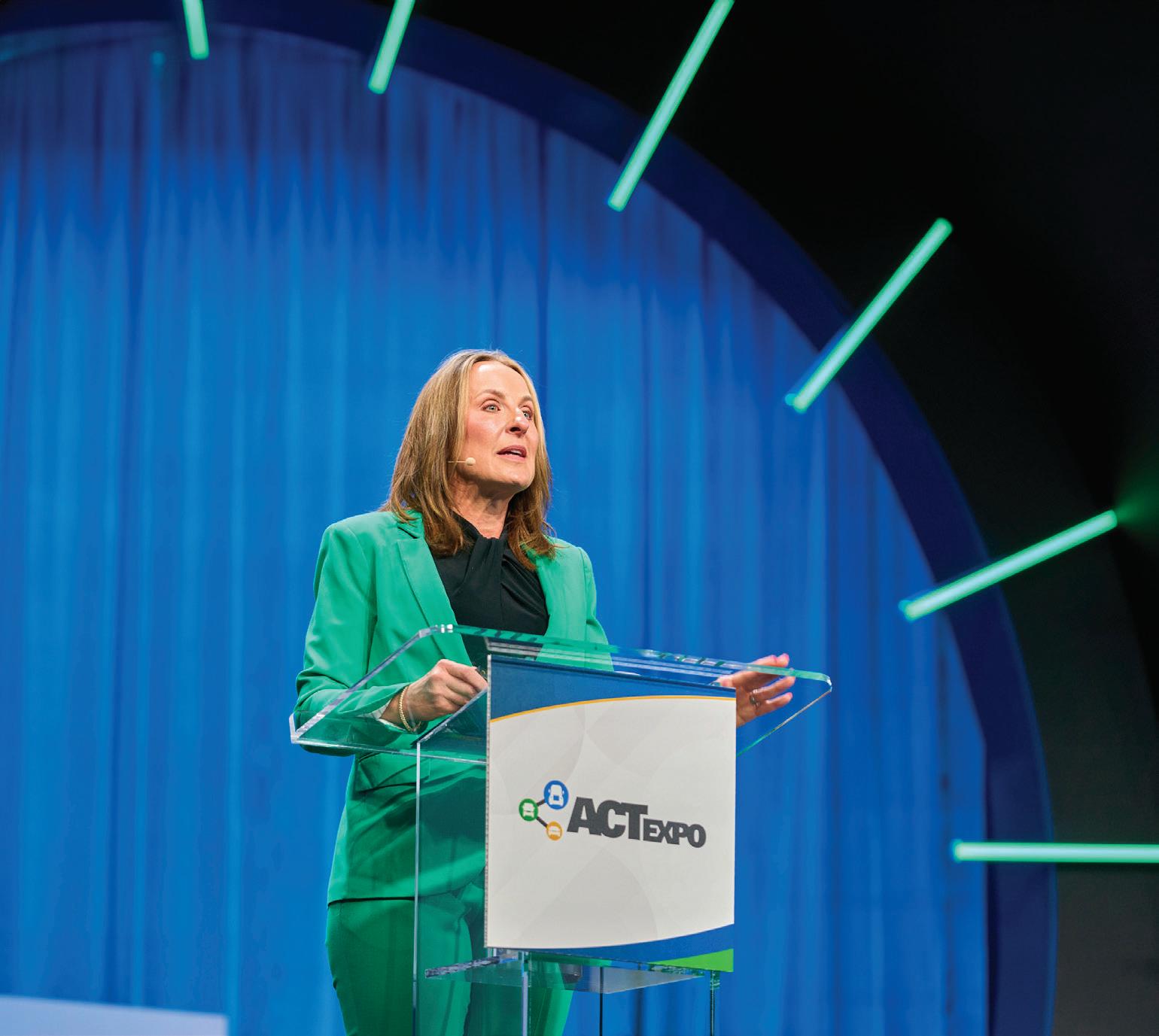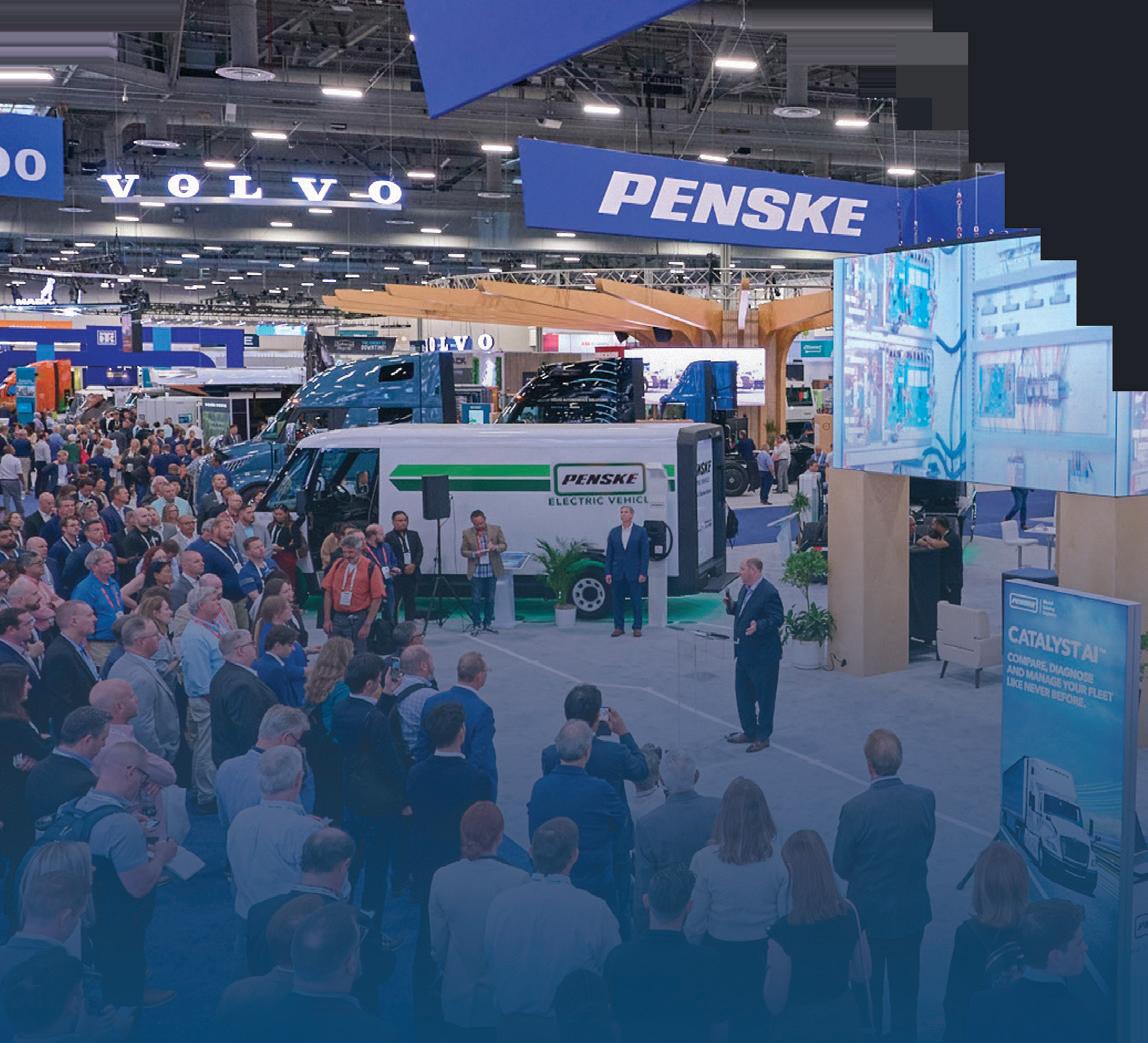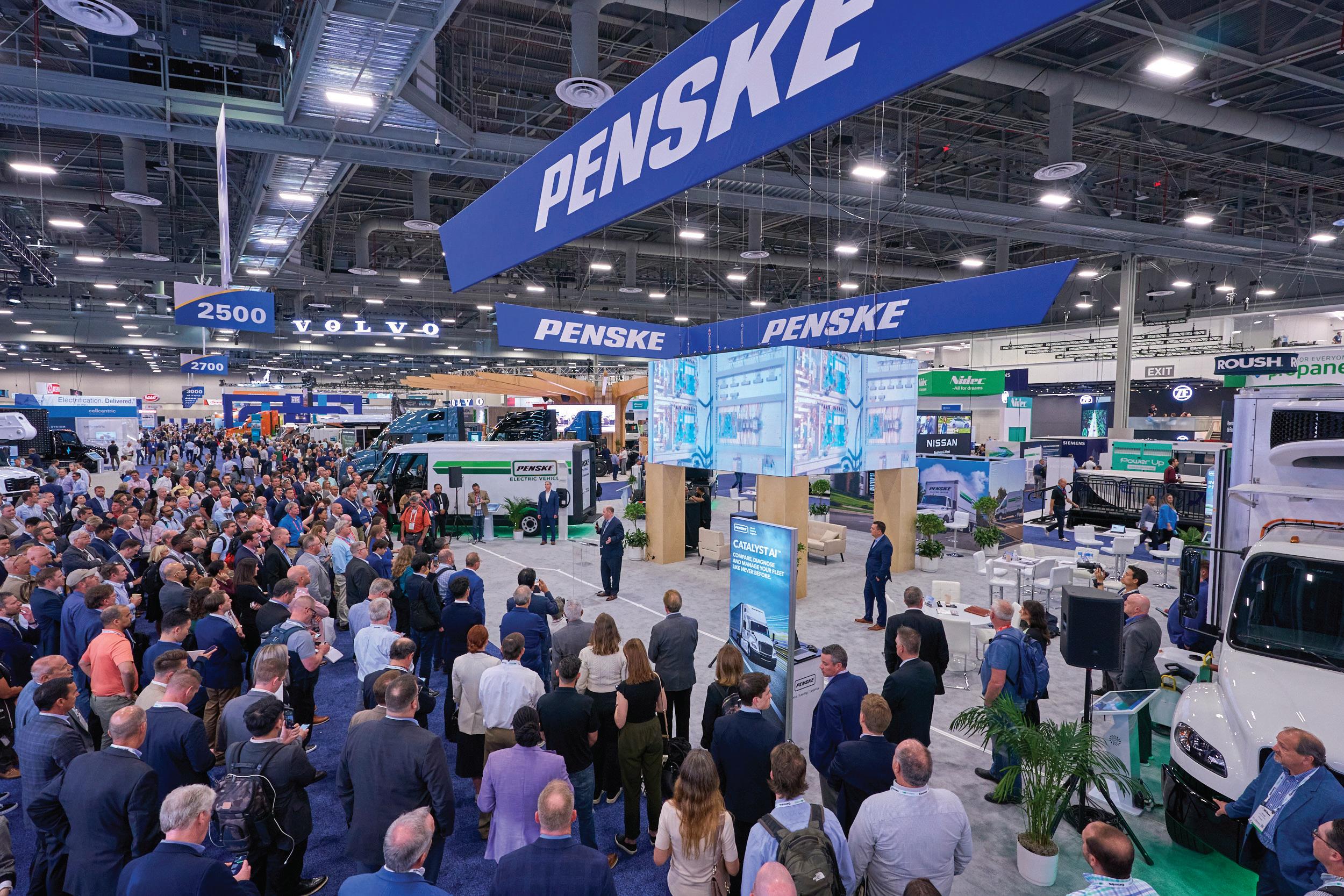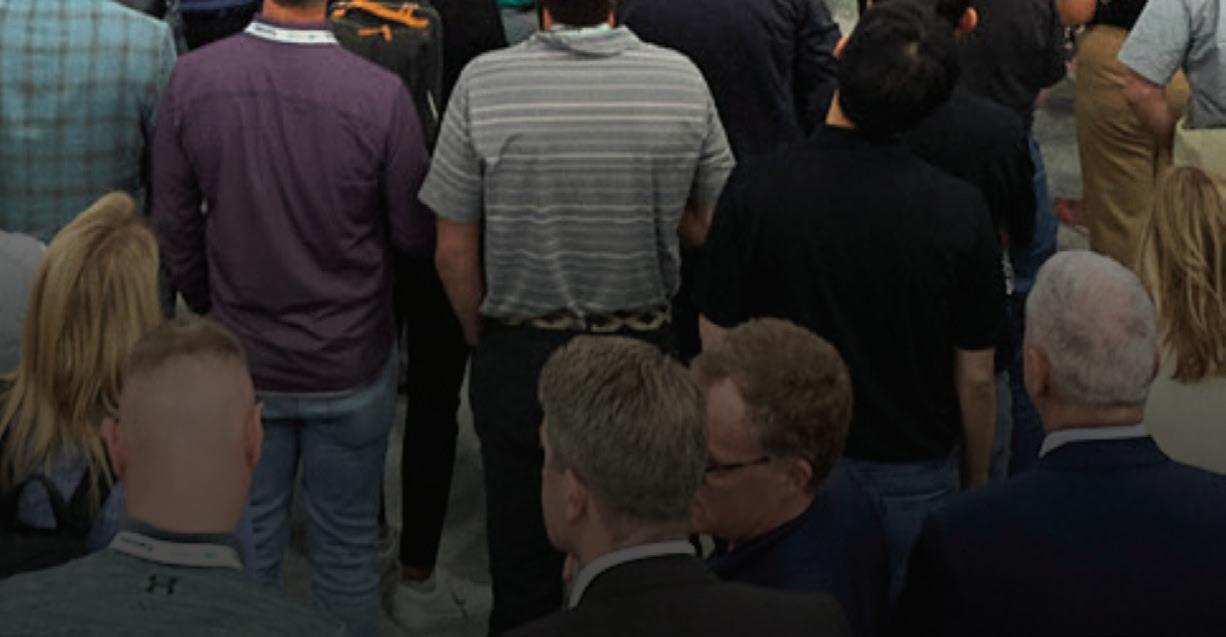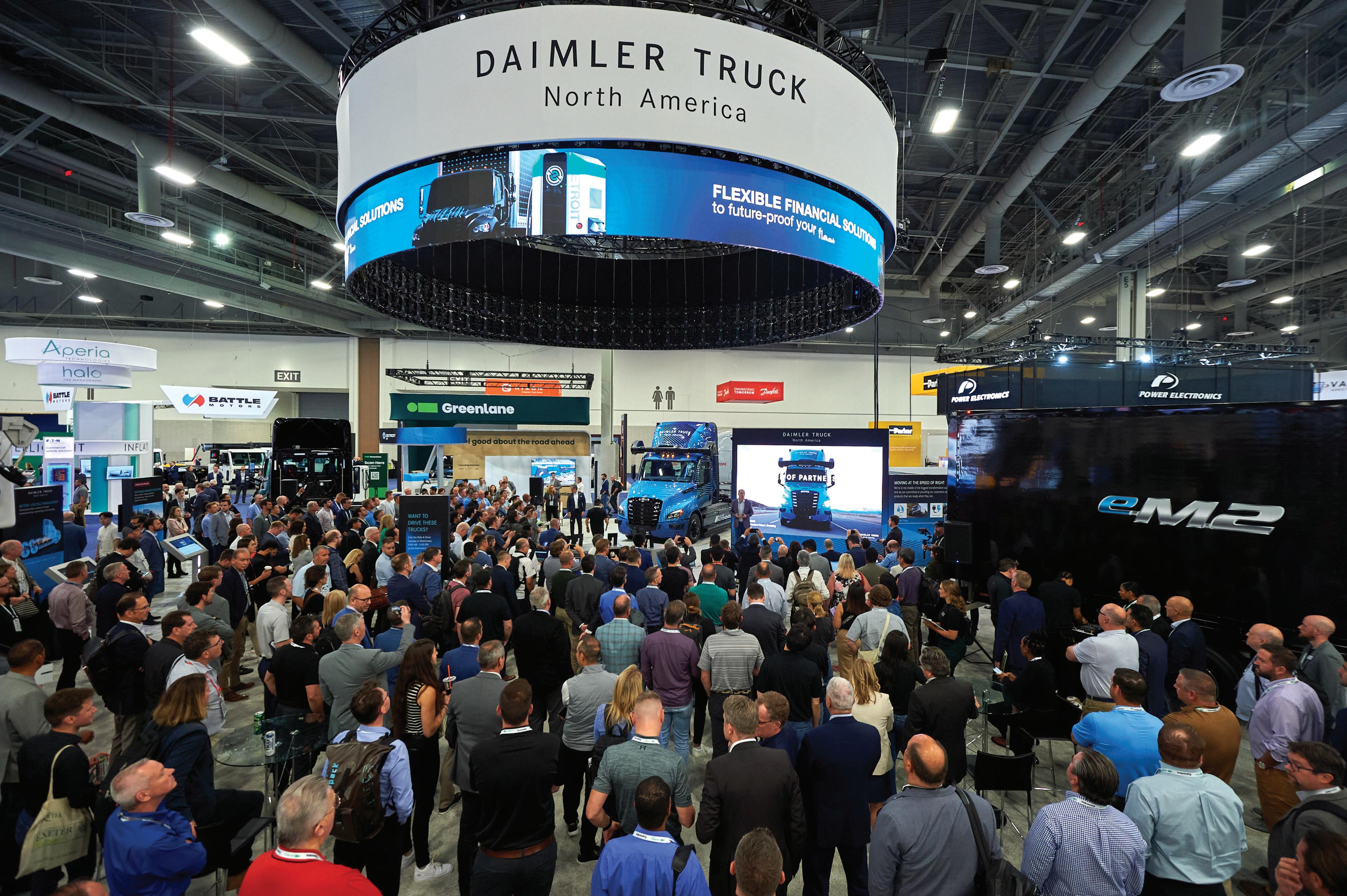







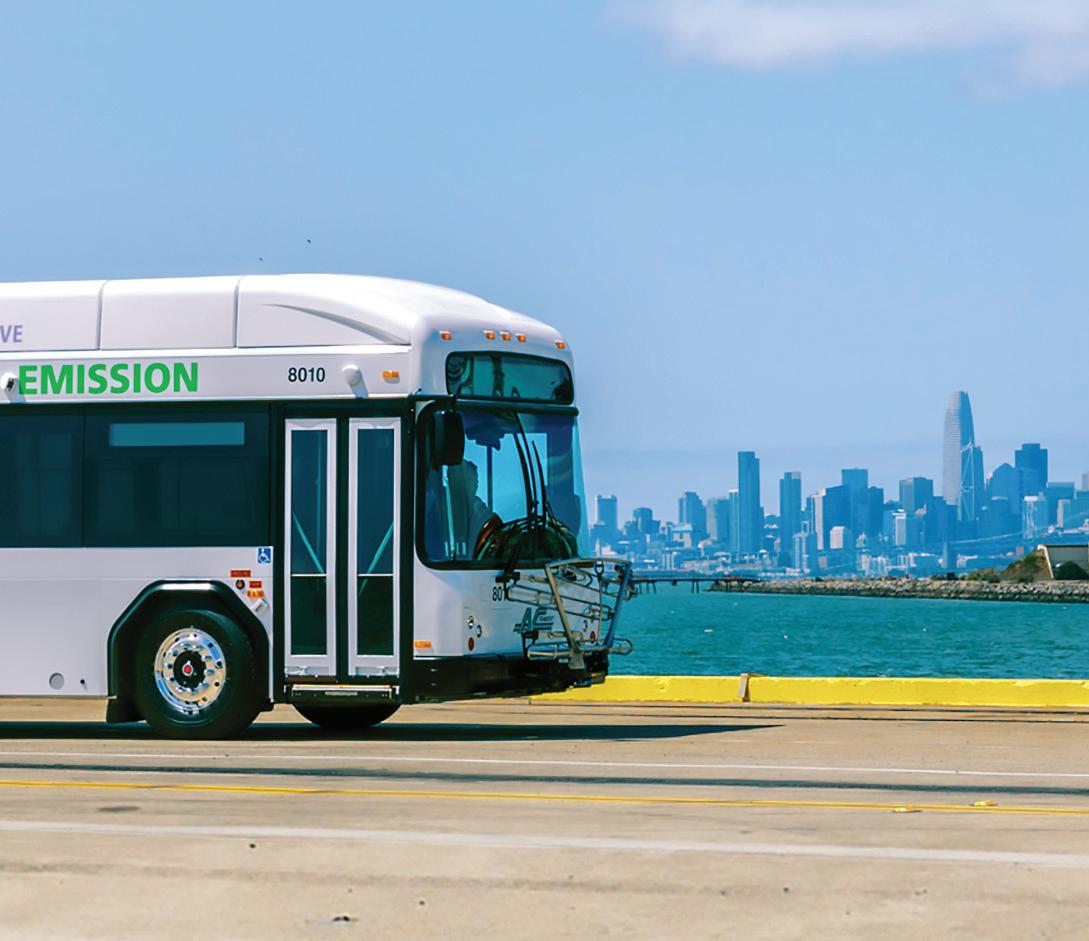
AC Transit’s methodical testing of zeroemission solutions is charting its path towards a 100 percent clean fl eet by California’s 2040 mandate.
12

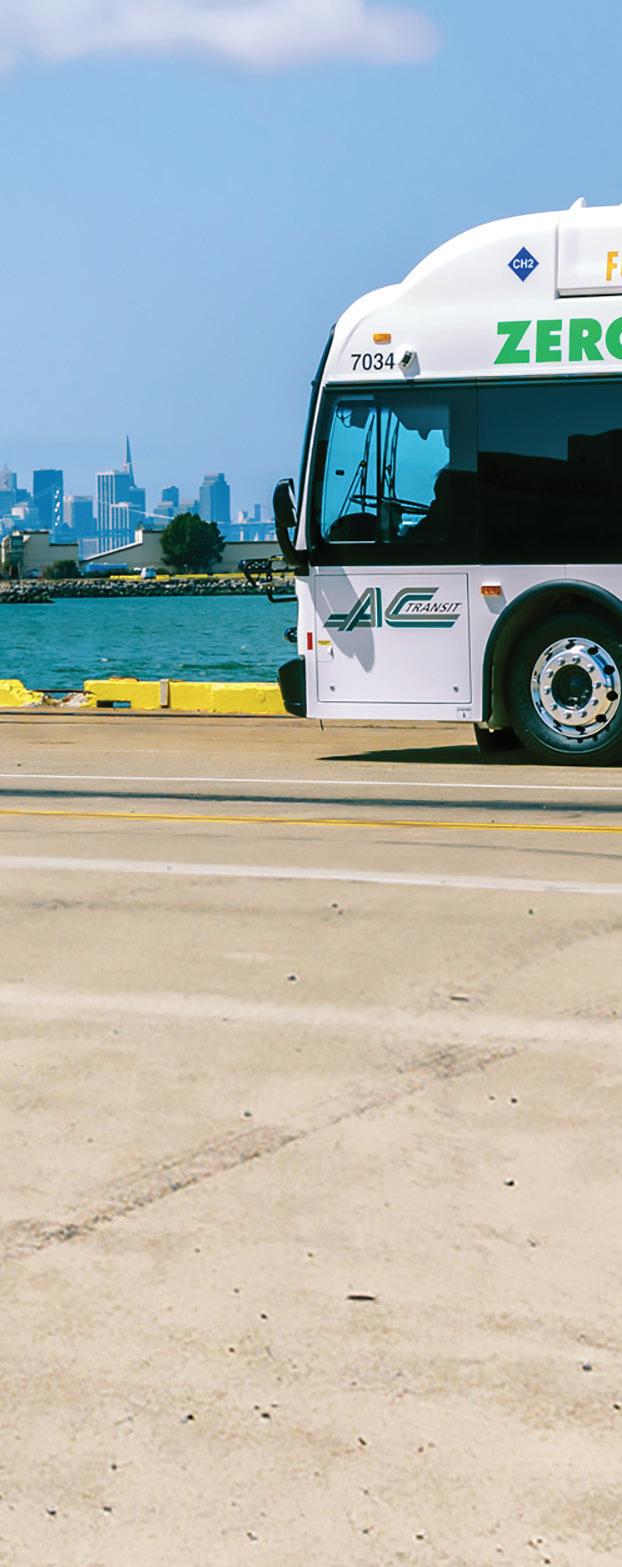



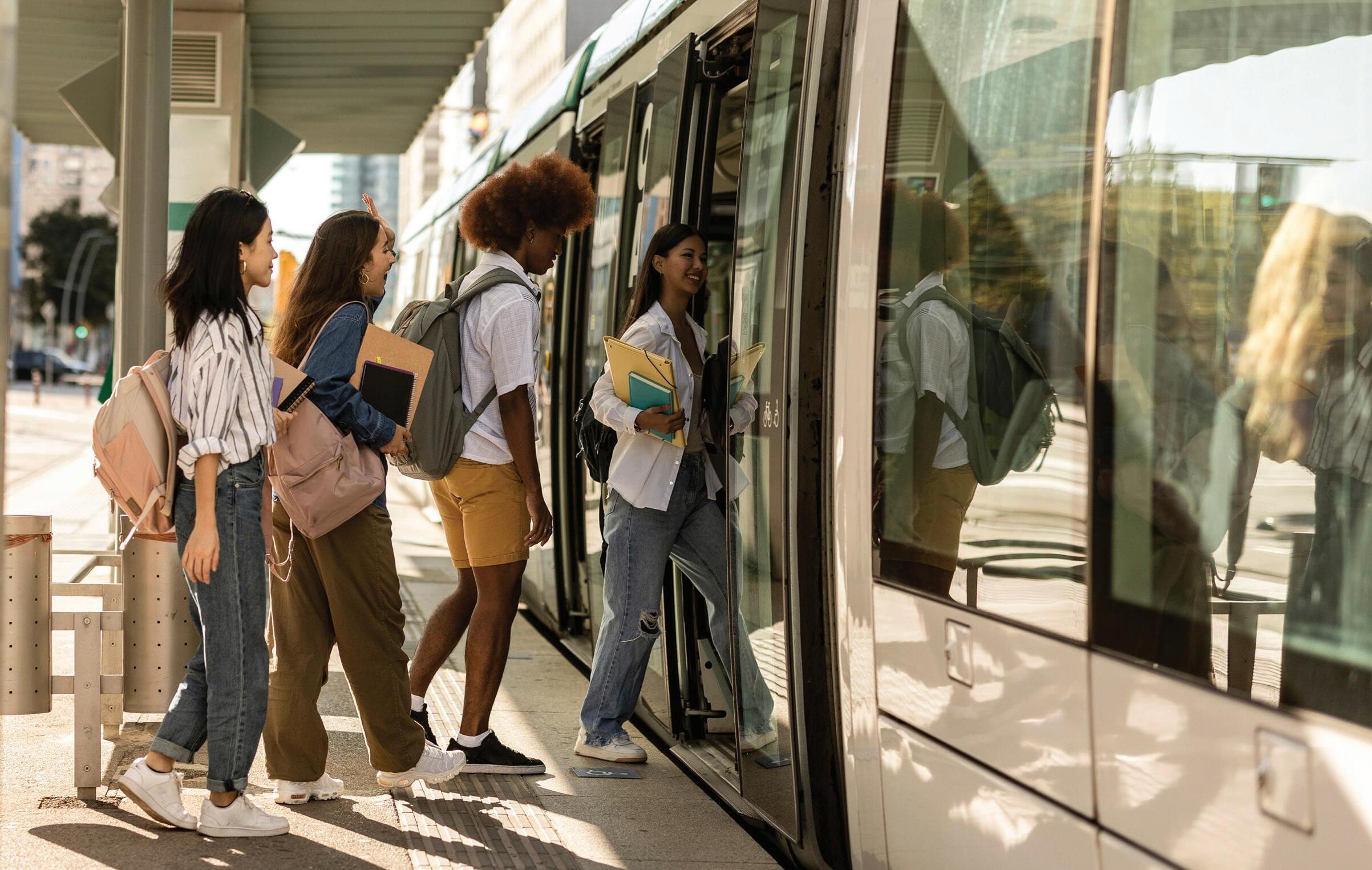
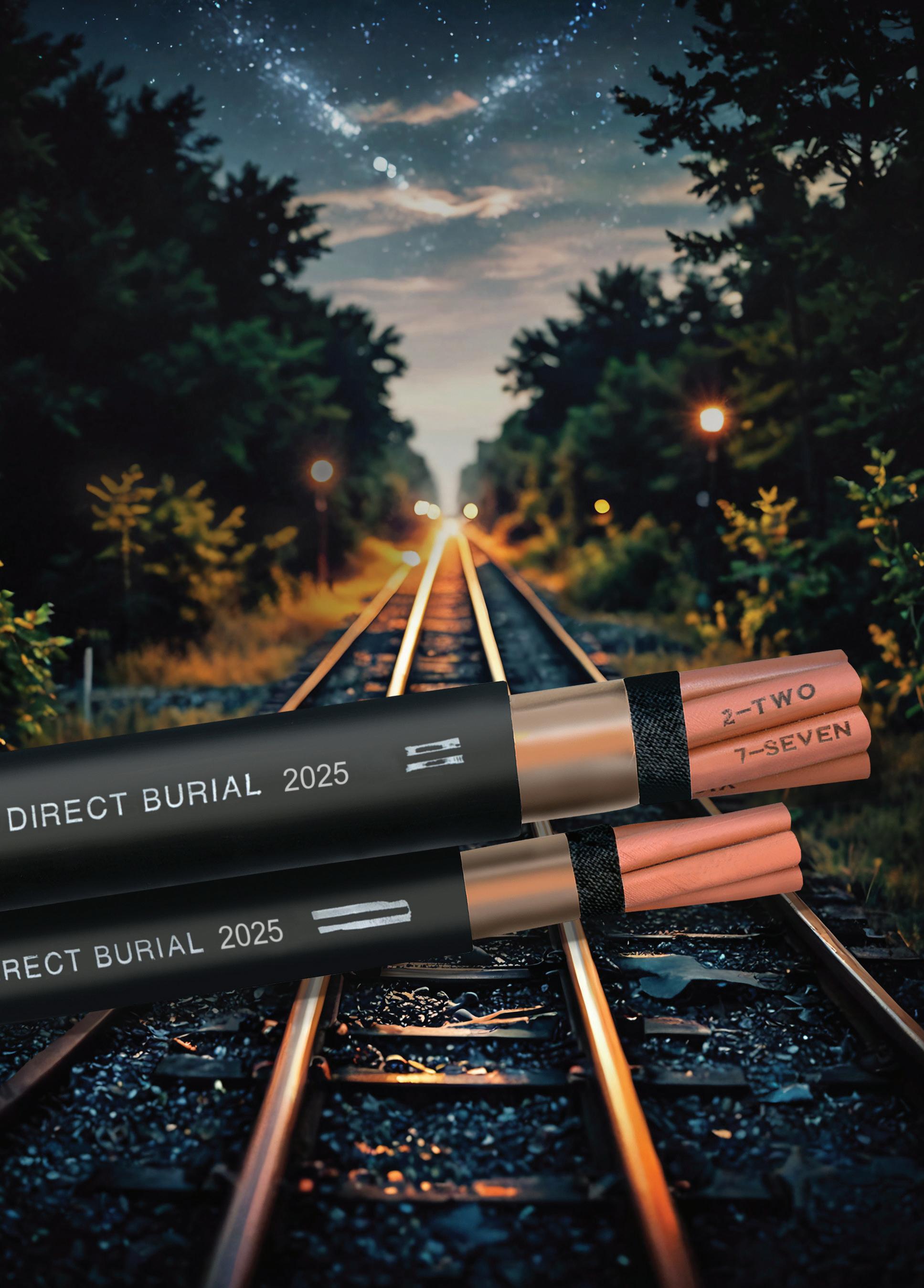
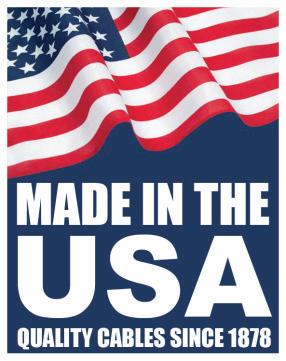

Lifeline AEDs
Unprecedented ease-of-use.
Robust and durable.
Easy maintenance.
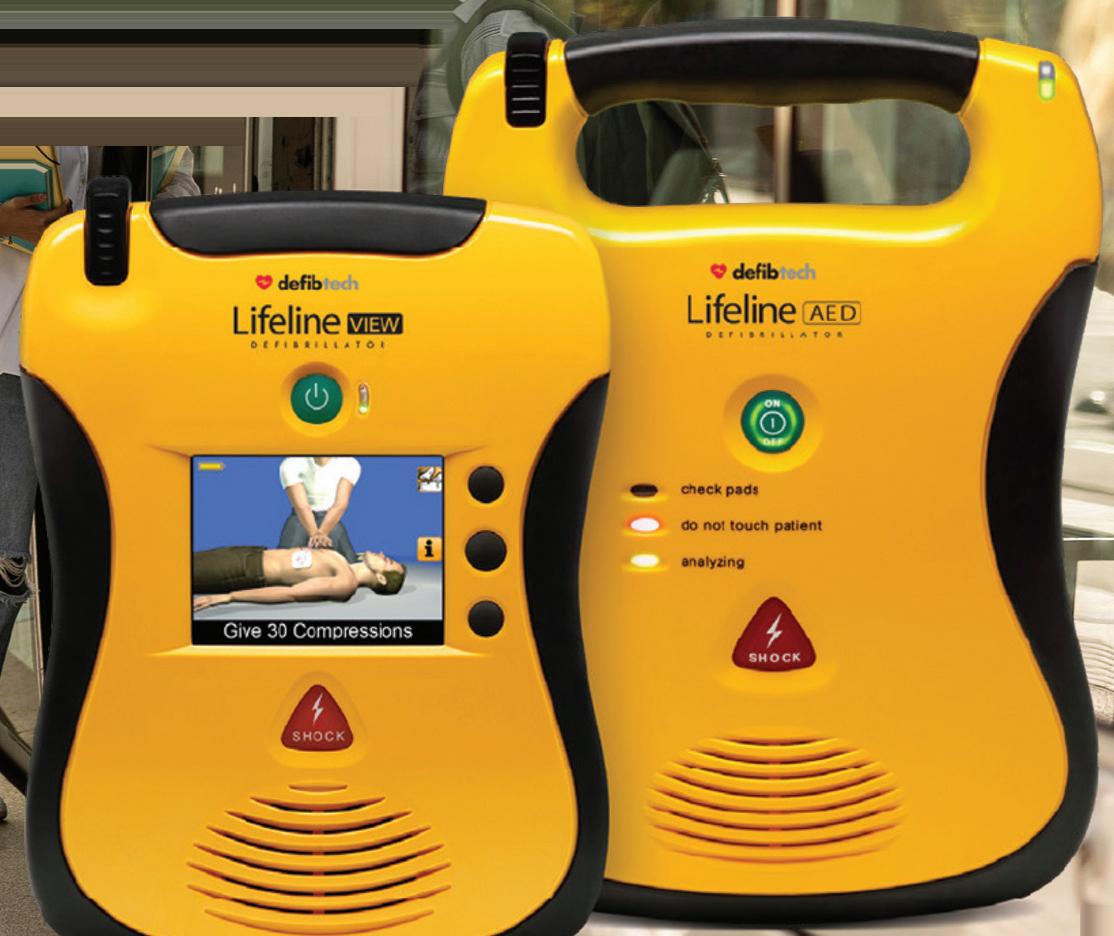
With millions of people using Public Transportation every day, healthcare emergencies are inevitable - including Sudden Cardiac Arrest (SCA). Having an AED (Automated External Defibrillator) handy on trains, buses, subways, and in stations/depots, can mean the difference between life and death for passengers and employees. Defibtech’s Lifeline AEDs are compact, rugged, and carefully designed to be simple to use, so that any passenger or transit employee can potentially save a life.


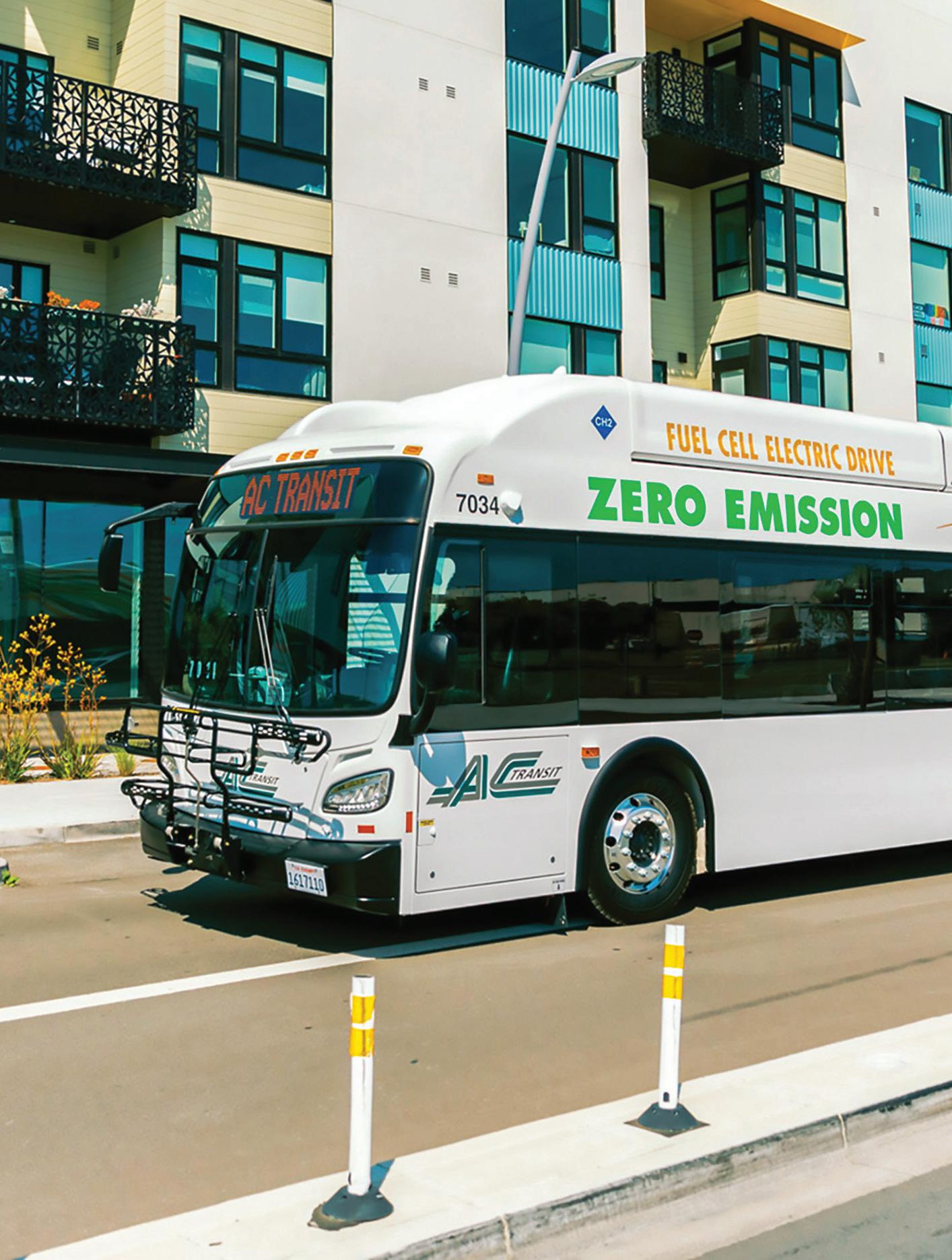
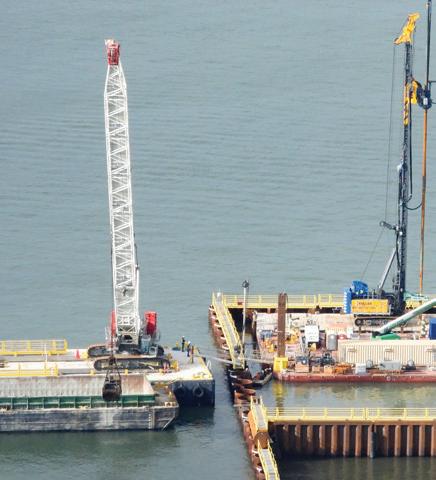
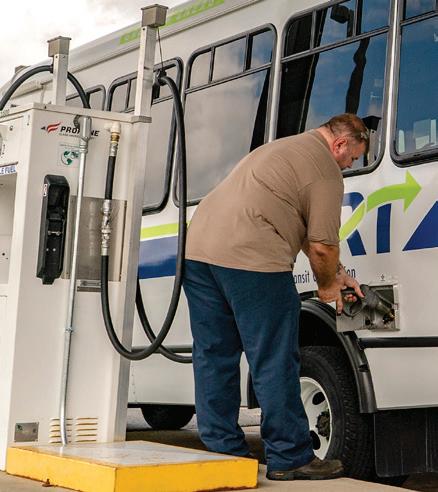
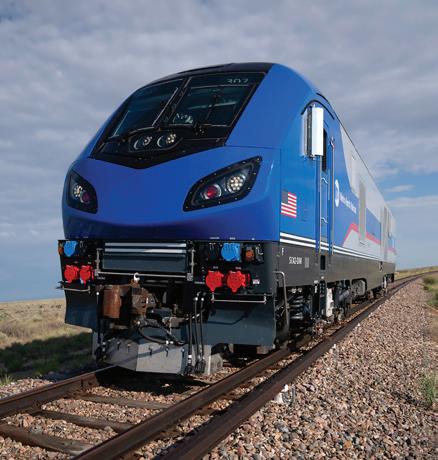
annual survey captures what is ahead by asking subscribers about budgets, procurement and general sentiment about the year.
AC Transit’s methodical testing of zero-emission solutions is charting its path towards a 100 percent clean fleet by California’s 2040 mandate.
26 How Paratransit Fleets are Lowering Costs and Emissions with Propane Autogas
The reliability of propane autogas ensures that paratransit services remain consistent and uninterrupted.
28 Dual-mode Motive Power: Advancing Sustainability and Efficiency at the Transportation Technology Center
As demand for rail travel increases and sustainability becomes a central focus, dualmode technology is set to play a pivotal role in shaping the future of rail.
Column: TriMet revolutionizing the rider experience with solar-powered signage
▶ With new ePaper displays, TriMet is bringing more information and resources to a broader base of riders
MassTransitmag.com/55263002
State of play: Transitioning to cleaner locomotive technology
▶ The transition to zero-emission technology on the bus side is well documented, yet significant challenges remain for passenger rail agencies to make a similar net-zero transition.
MassTransitmag.com/55252786
TWITTER @MassTransitmag LINKEDIN linkedin.com/company/11303271
INSTAGRAM instagram.com/masstransitmag_ FACEBOOK facebook.com/MassTransit
SUBSCRIBE TO OUR NEWSLETTERS MassTransitmag.com/subscribe
Vol. 51, No. 1
VICE PRESIDENT, MARKET LEADERINFRASTRUCTURE & AVIATION GROUP
Brandon Williamson (512) 739-2102 | BWilliamson@MassTransitmag.com
EDITOR IN CHIEF Megan Perrero (603) 891-9454 | MPerrero@MassTransitmag.com
ASSOCIATE EDITOR Brandon Lewis (216) 298-3269 | BLewis@MassTransitmag.com
ASSOCIATE EDITOR Eman Abu-Khaled EAbukhaled@MassTransitmag.com
CONTRIBUTORS Bridget Kidd, Acacia Reber, Miki Szikszai, Maggie Clancy
MULTIMEDIA ACCOUNT MANAGER Kristy Dziukala (815) 353-9493 | Kristy@MassTransitmag.com
INSIDE SALES REPRESENTATIVE Amy Stauffer (920) 259-4311 | AStauffer@MassTransitmag.com
LIST RENTALS REPRESENTATIVES InfoGroup
MICHAEL COSTANTINO (402) 836-6266 | Michael.Costantino@infogroup.com
KEVIN COLLOPY (402) 836-6265 | Kevin.Collopy@infogroup.com
PRODUCTION MANAGER Patti Brown
AD SERVICES MANAGER Terry Gann
ART DIRECTOR Erin Brown
AUDIENCE DEVELOPMENT MANAGER Debbie Dumke
DIGITAL AUDIENCE DEVELOPMENT MANAGER Alden Metzger
ENDEAVOR BUSINESS MEDIA, LLC
CEO Chris Ferrell
COO Patrick Rains
CRO Paul Andrews
CDO Jacquie Niemiec
CALO Tracy Kane
CMO Amanda Landsaw
EVP TRANSPORTATION Kylie Hirko
SUBSCRIPTION CUSTOMER SERVICE
877-382-9187; 847-559-7598
Circ.MassTransit@Omeda.com PO Box 3257, Northbrook IL 60065-3257
ARTICLE REPRINTS reprints@endeavorb2b.com
Mass Transit (USPS 017-230), (ISSN 0364-3483 print, ISSN 2150413x online) is published 6 times per year in January/February, March/April, May/June, July/August, September/October, November/ December by Endeavor Business Media, LLC. 201 N Main St 5th Floor, Fort Atkinson, WI 53538 . Periodicals postage paid at Fort Atkinson, WI, and additional mailing offices. POSTMASTER: Send address changes to Mass Transit, PO Box 3257, Northbrook, IL 60065-3257.
SUBSCRIPTIONS: Publisher reserves the right to reject non-qualified subscriptions. Subscription prices: U.S. ($47.50 per year); Canada/ Mexico ($81.25 per year); All other countries ($116.25 per year). All subscriptions payable in U.S. funds. Send subscription inquiries to Mass Transit, PO Box 3257, Northbrook, IL 60065-3257. Customer service can be reached toll-free at 877-382-9187 or at circ.masstransit@ omeda.com for magazine subscription assistance or questions. Printed in the USA. Copyright 2025 Endeavor Business Media, LLC. All rights reserved. No part of this publication may be reproduced or transmitted in any form or by any means, electronic or mechanical, including photocopies, recordings, or any information storage or retrieval system without permission from the publisher. Endeavor Business Media, LLC does not assume and hereby disclaims any liability to any person or company for any loss or damage caused by errors or omissions in the material herein, regardless of whether such errors result from negligence, accident, or any other cause whatsoever. The views and opinions in the articles herein are not to be taken as official expressions of the publishers, unless so stated. The publishers do not warrant either expressly or by implication, the factual accuracy of the articles herein, nor do they so warrant any views or opinions by the authors of said articles.
While there may be uncertainties surrounding federal funding and regulations for supporting the transition to zero-emission fleets, many agencies are well underway in these projects and should find every way to see them through.
Iremember attending a session during the American Public Transportation Association’s (APTA) 2024 annual conference that asked audience members to help take stock on the current state of implementing zero-emission buses (ZEBs). Through an interactive survey, the majority of audience members— primarily from transit agencies—acknowledged that while there may not be a direct economic return on investment, they still felt an obligation to transition their fleets to sustainable vehicles. These investments go beyond financial incentives and instead reflect the industry’s commitment to supporting healthy communities and addressing climate change. As one panelist summarized, it’s a necessary cost, and financial gain shouldn’t be the reason to do the right thing.
While federal support for clean fleets over the next four years may look uncertain, the momentum for these projects is well underway. According to responses from our 2025 Mobility Outlook survey (page 18), 47 percent of agencies plan to purchase battery-electric buses in 2025. When including hybrid and hydrogen fuel-cell buses, that number jumps to 90 percent.
These are not one-off purchases. Over half of agency respondents report already having low- and zero-emission buses in their fleets, with 54 percent having a plan in place to complete the transition. By 2035, 32 percent of agencies expect to fully transition, and by 2040, nearly 68 percent anticipate reaching that milestone. State mandates and agency-driven initiatives—beyond board directives—are the primary drivers behind these transitions.
Tackling the zero-emissions transition is a feat—from hundreds of thousands of dollars invested in studies, research and training personnel to millions spent on right-sizing facilities and supporting infrastructure. For many agencies, this work has reached a critical point. Too much has been invested in time, resources and funding to turn back now. But more importantly, this is about fulfilling a responsibility to the communities we serve. Greenhouse gas emissions from the transportation sector have a direct impact on public health and the environment.
One of the last questions during the APTA session asked whether the ZEB transition was worth it and if agencies could wait to do it. Over 80 percent of the audience members said it was worth it, and it can’t wait. Meeting this challenge will require collaboration, resource-sharing and ongoing innovation. The road ahead won’t be easy, but as an industry, we’re ready to face it together.
Zero-emission investments reflect the industry’s commitment to support healthy communities and fight climate change.
m perrero@ masstransitmag.com
( 603) 891-9454
linkedin.com/in/ m egan-perrero

Megan Perrero, editor in chief




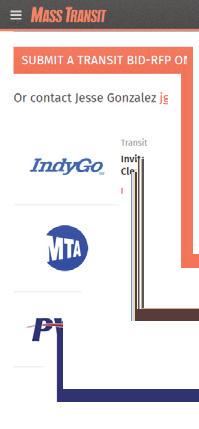

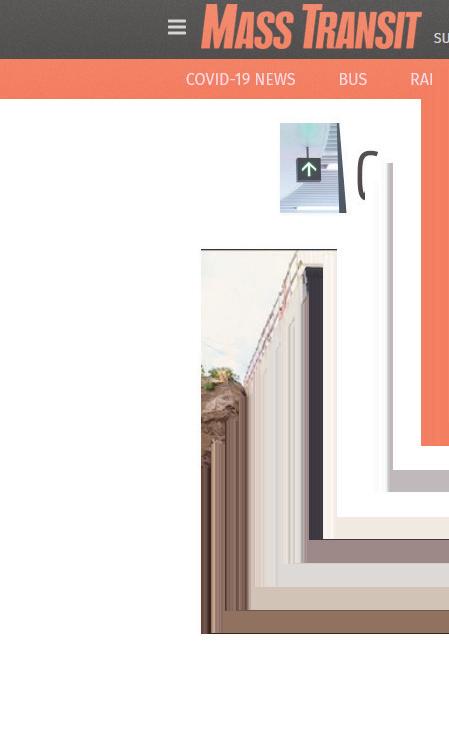
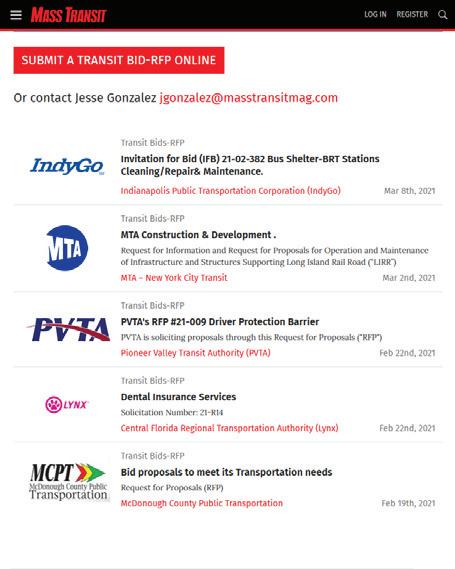

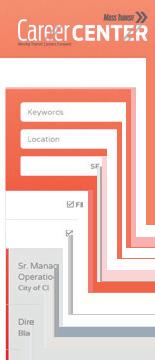



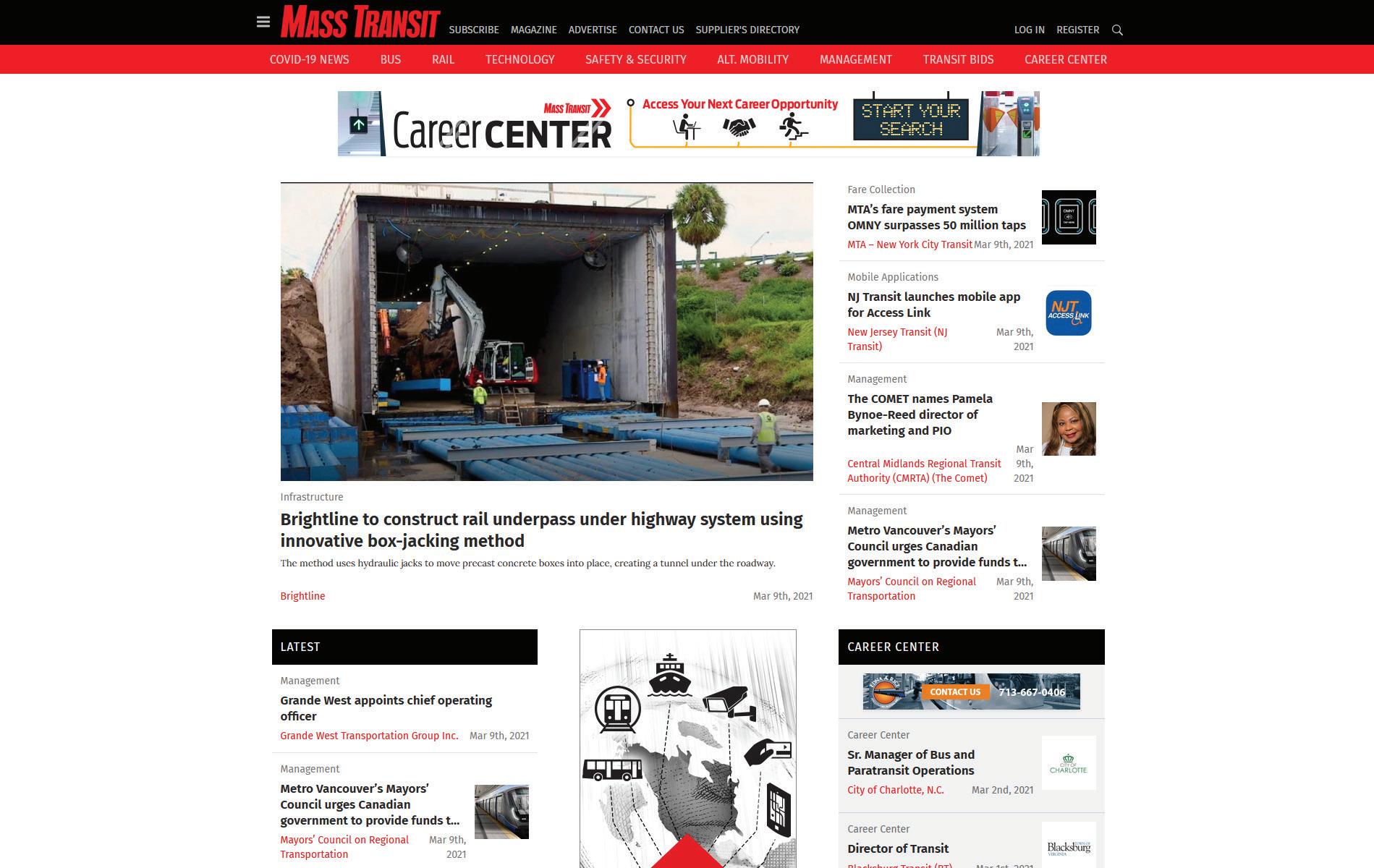




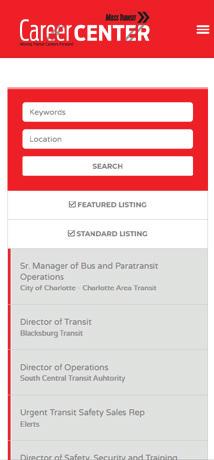





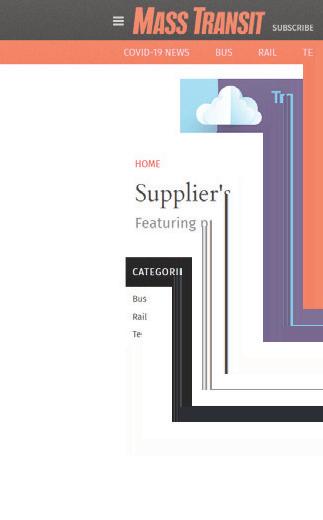
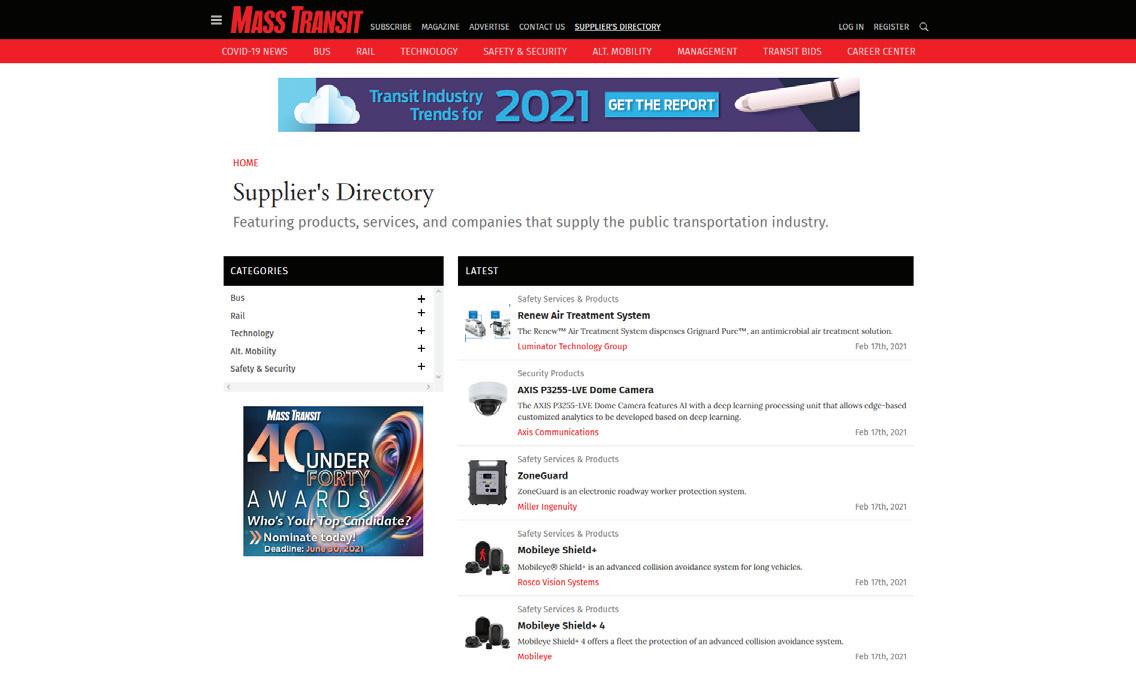
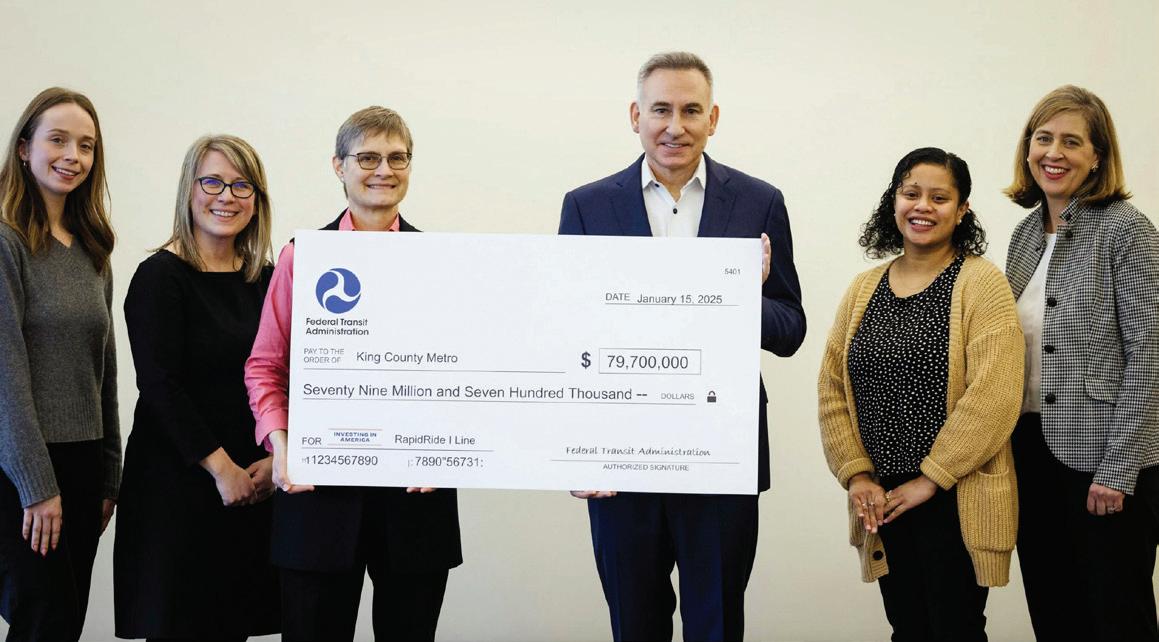
King County Metro Transit (King County Metro) received a $79.7 million grant from the Federal Transit Administration (FTA) to support construction of the agency’s new rapid bus route. Funding for the estimated $168.5 million project comes from FTA’s Capital Investment Grants program. The I Line, the agency’s newest RapidRide route, will use hybrid electric buses to connect cities in South King County, Wash., including Renton, Kent and Auburn, with weekday service every 10 to 15 minutes during the day. Weekend service will offer 15-minute frequencies throughout the day. MassTransitmag.com/55261778
▶ Bay Area transit agencies are now syncing schedules to improve transfers between systems and making schedule changes at the same time. The schedule changes will occur twice each year, once in summer (mid-August) and once in winter (mid-January). The number of transit agencies with full schedule change alignment (changing schedules at the same time in August and January) has increased from four to 20 since 2022. Bay Area transit agencies are also working with the Metropolitan Transportation Commission on the upcoming next
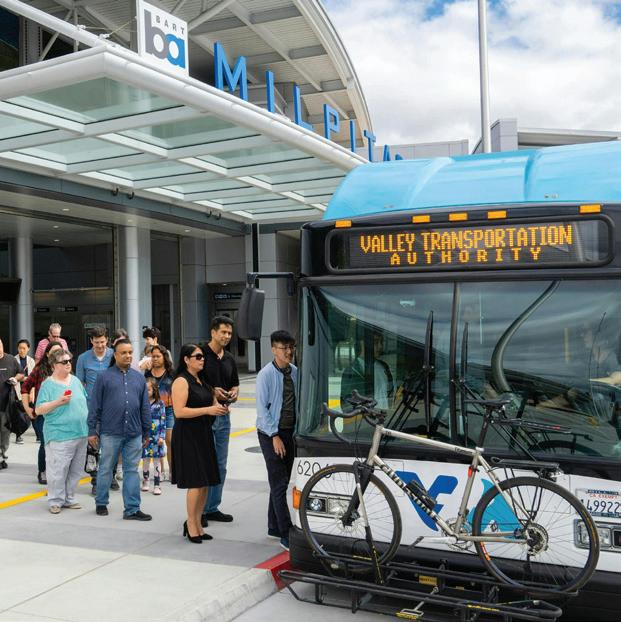
generation of Clipper, which will give transit riders free or discounted transfers between systems.
MassTransitmag.com/55262252
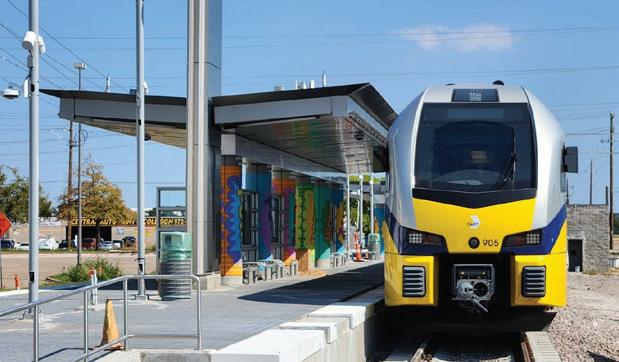
▶ Dallas Area Rapid Transit’s (DART) Silver Line has reached 85 percent completion. The agency is planning to open the 26-mile regional rail project to passengers for revenue service between the end of 2025 and early 2026. Once in operation, the Silver Line will connect passengers from East Plano, Texas, to Dallas/Fort Worth International Airport’s Terminal B. The project crosses seven cities—Addison, Carrollton, Coppell, Dallas, Grapevine, Plano and Richardson—across three counties and is adding 10 new transit stations to the existing DART network. MassTransitmag.com/55261080
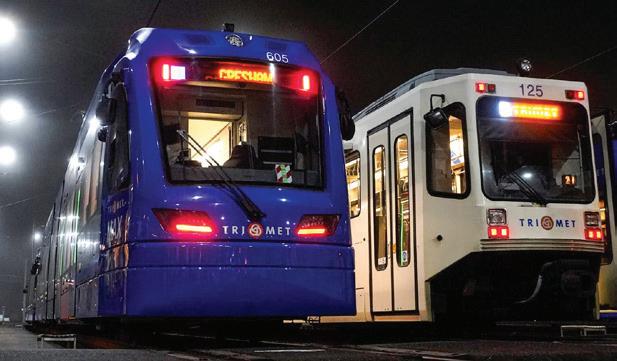
▶ TriMet rolled out two of its new Type 6 MAX trains on Jan. 16. The agency notes 30 new vehicles will enter service in the months ahead, operating on all five MAX lines. The Type 6 MAX trains are the agency’s most advanced trains and are part of an overall effort
to boost reliability and the rider experience. The trains are also the first to not enter service alongside an extension of the MAX system. MassTransitmag.com/55261804
Midtown Bus Terminal replacement project with $1.9 billion federal loan
▶ The Port Authority of New York and New Jersey (PANYNJ) has been approved for a $1.9 billion federal loan through the U.S. Department of Transportation’s Transportation Infrastructure Finance and Innovation Act (TIFIA) loan program. These funds will be used for the first phase of construction for PANYNJ’s Midtown Bus Terminal replacement project. The TIFIA loan, to be issued through the Build America Bureau, will support the funding of the first phase of the $10 billion project, with construction to begin this year. MassTransitmag.com/55261418
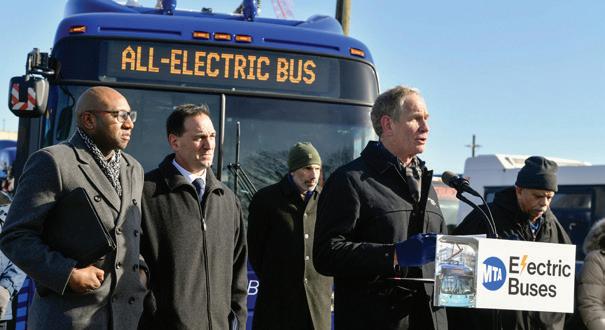
▶ The Metropolitan Transportation Authority (MTA) has purchased 265 new zero-emission buses that will operate on routes across the city. This purchase builds on the 60 zero-emission buses that came in 2024 and is in addition to the 205 zero-emission buses slated to come beginning later this year. These new 40-foot buses will help to reduce greenhouse gas emissions by upwards of 90 metric tons annually per bus. They feature lightweight electric traction drive systems that allow buses to recover up to 90 percent of energy during braking.
MassTransitmag.com/55260514

Kris Kolluri was named NJ Transit president and CEO after completing his tenure as the CEO of the Gateway Development Commission, a bi-state entity overseeing the $16.1 billion Hudson Tunnel Project. Kolluri has also served as CEO of Camden Community Partnership, Inc. and of the Rowan University/Rutgers - Camden Board of Governors. Prior to his work in the infrastructure and social equity space, Kolluri worked as a staff member in Congress for over a decade, eventually becoming a senior policy advisor to House Democratic Leader Richard A. Gephardt. MassTransitmag.com/55249184

Brad Thomas took over as CEO of Keolis after David Scorey stepped down from the position on Dec. 31, 2024. Thomas joined Keolis earlier in 2024 after previously serving as CEO and president of First Transit and First Vehicle Services. There, he oversaw revenue growth, expansion of the business to 300 contracts, extended the portfolio into Central America and India and managed several strategic acquisitions. MassTransitmag.com/55247684

The GDC has appointed Thomas Prendergast as its CEO. Prendergast will apply his skills in managing large rail infrastructure throughout his career serving as president, chairman and CEO of the Metropolitan Transportation Authority; president of the Long Island Rail Road; and CEO of the South Coast British Columbia Transportation Authority. Prendergast most recently worked with AECOM, where he oversaw design and consulting services across all business lines in New York and New Jersey, including transportation, water and wastewater, environment, power and buildings and places.
MassTransitmag.com/55261888

SEPTA veteran Scott Sauer has been named as the agency’s interim general manager as the board considers a permanent successor for former SEPTA General Manager Leslie L. Richards. Sauer had most recently been the chief operating officer for SEPTA. He began his career with SEPTA in 1990 as a surface train operator. A second-generation transit professional, he follows in the footsteps of his late father, Robert, who served the Philadelphia Transportation Company and SEPTA for 30 years.
MassTransitmag.com/55248355

Michael Lindsay has been named the new interim president and CEO of Metrolinx, which took effect Dec. 16, 2024. Lindsay assumed his responsibilities with the agency on Dec. 9 to begin supporting the opening of Eglinton Crosstown as a top priority in the transition process. Lindsay has taken over for Phil Verster, who accepted a new position.
MassTransitmag.com/55247030
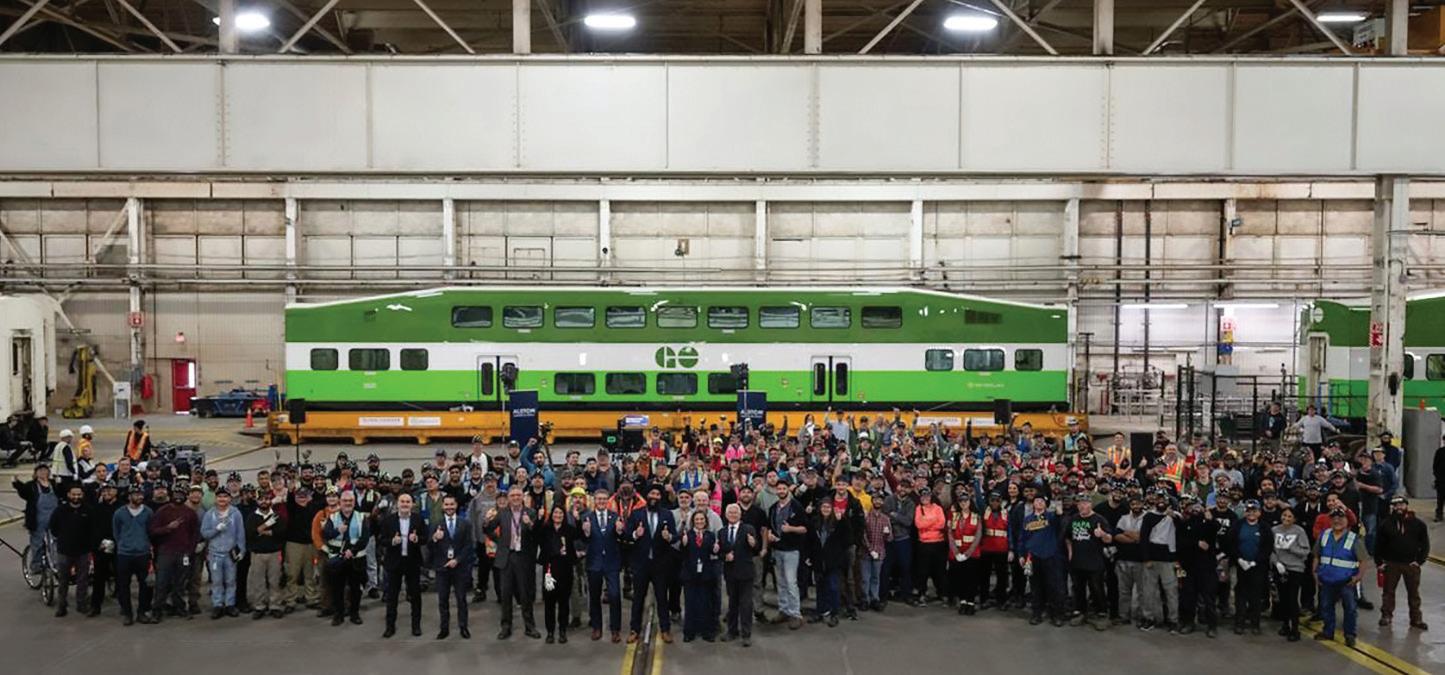
Government of Ontario to invest C$500 million in refurbishing 181 GO Transit bi-level rail coaches at Alstom facility in Thunder Bay
The government of Ontario is investing nearly C$500 million (US$347.7 million) to refurbish 181 GO Transit bi-level rail coaches at the Alstom
plant in Thunder Bay, Ontario. The investment is part of the ongoing service expansion across the GO rail network. The refurbished bi-level coaches will be equipped with new seating, doors, flooring, walls and ceilings, upgraded washrooms, updated electrical outlets with USB ports and new HVAC control systems.
MassTransitmag.com/55261427
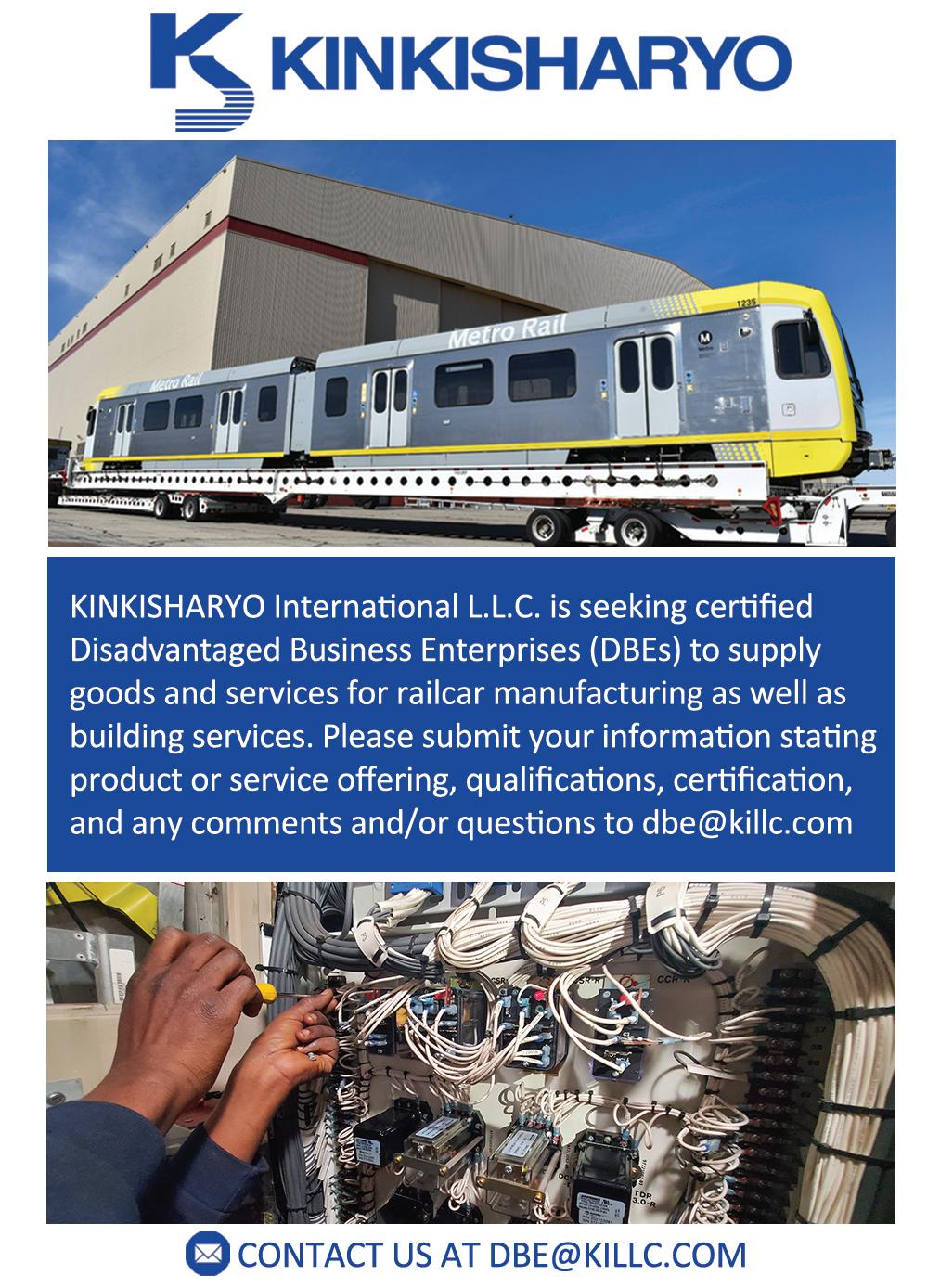
Groupe Porteur is awarded contract for GatineauOttawa tramway project
Groupe Porteur has been awarded a professional, technical and multidisciplinary services contract for the Société de transport de l’Outaouais’s Gatineau-Ottawa tramway project, which comprises SYSTRA Canada, Egis and EXP. The 24-kilometer (14.9 mile) tramway project will be an important link between downtown Gatineau and Ottawa, the capital city of Canada. Groupe Porteur will be partnering with architectural firms Richez_Associés and Provencher Roy on the project to help transform urban mobility and forge sustainable connections between communities. Groupe Porteur will support the TramGO Project Office through all phases of the C$114 million (US$79 million) Gatineau-Ottawa tramway contract.
MassTransitmag.com/55261833
STV was awarded a five-year task order contract by the Maryland Department of Transportation Maryland Transit Administration to provide a range of consulting services related to rolling stock, including bus and passenger rail vehicles. MassTransitmag.com/55261105
May Mobility is partnering with Tecnobus to introduce a new autonomous minibus platform, offering further flexibility to fleet operators and transit agencies across domestic and international markets.
MassTransitmag.com/55259870
Wabtec’s R255 Hybrid Battery-Diesel work locomotives have been reviewed and approved for maintenance operations by the Metropolitan Transportation Authority for use across its subway network.
MassTransitmag.com/55254159
AECOM was selected by the Austin Transit Partnership as its delivery partner for the Austin Light Rail Phase 1 project, which will introduce an approximately 10-mile light-rail system to Austin, Texas.
MassTransitmag.com/55251143
The Metropolitan Transportation Authority activated Central Business District Tolling Jan. 5, the country’s first congestion pricing program.
MassTransitmag.com/55253267
VPRA awards construction contract to Long Bridge Rail Partners for Long Bridge Project-South Package
▶ The Virginia Passenger Rail Authority (VPRA) has selected the Long Bridge Rail Partners as construction partner for the Long Bridge Project-South Package. VPRA separated the Long Bridge Project, a new two-track bridge across the Potomac River, into two procurements: a North Package and a South Package. The North Package was awarded to Skanska/ Flatiron Joint Venture in December 2023. The selection of the South Package moves the project to the next level, as all players are now in place.
MassTransitmag.com/55262258
Glendora to Pomona light-rail project reaches substantial completion
▶ The Glendora to Pomona project reached substantial completion on

Jan. 3. The 9.1-mile, four-station Foothill Gold Line light-rail project is now ready to be turned over to the Los Angeles County Metropolitan Transportation Authority (L.A. Metro). The entire newly constructed lightrail system from Glendora to Pomona (including the stations, tracks, power system, train control system, grade crossing safety equipment, communications system, etc.) is now fully functional and ready to be used as intended. After reaching substantial completion, smaller, final elements of work (mostly categorized as punch list items) will remain to be completed throughout the corridor and at the station areas, but the continuing work activities do not impact L.A. Metro’s
ability to ready the new extension for passenger service.
MassTransitmag.com/55253306
▶ The Missoula Urban Transportation District (Mountain Line) now features electric buses on more than half of its bus fleet. Since 2017, Mountain Line has been working to replace its diesel buses with electric vehicles. In 2020, the Mountain Line Board of Directors committed to a zero-emissions fleet by 2035. The agency reached one million miles driven by its electric fleet in January 2025.
MassTransitmag.com/55260788
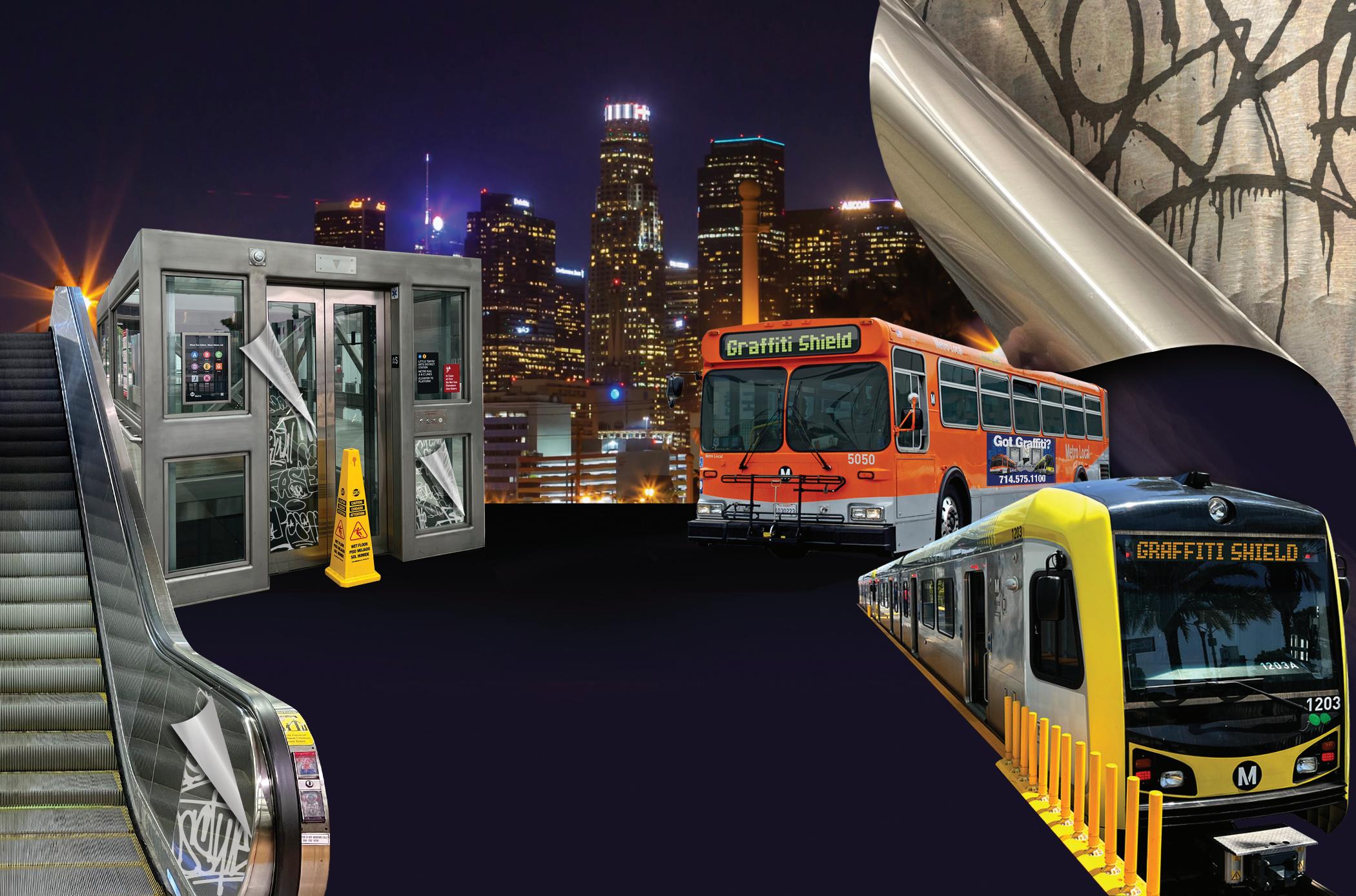
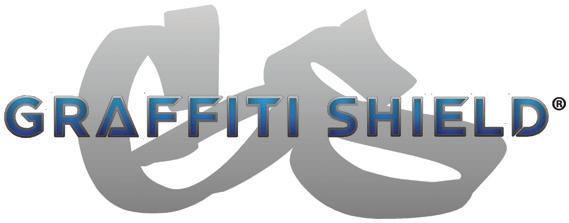





AC Transit’s methodical testing of zeroemission solutions is charting its path towards a 100 percent clean fl eet by California’s 2040 mandate.
BY EMAN ABU-KHALED, ASSOCIATE EDITOR

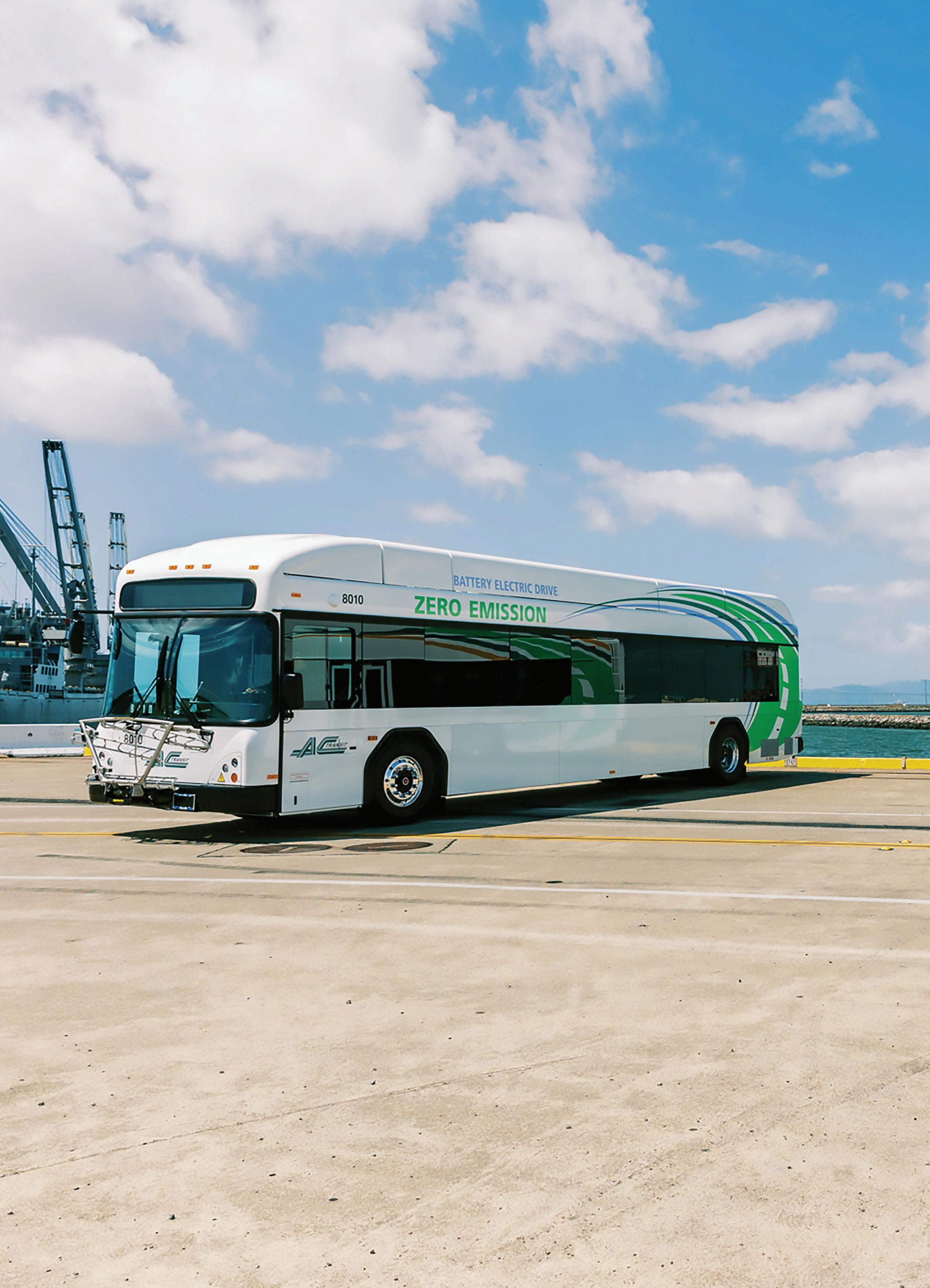




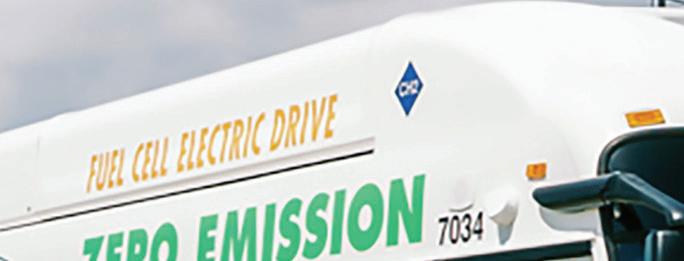
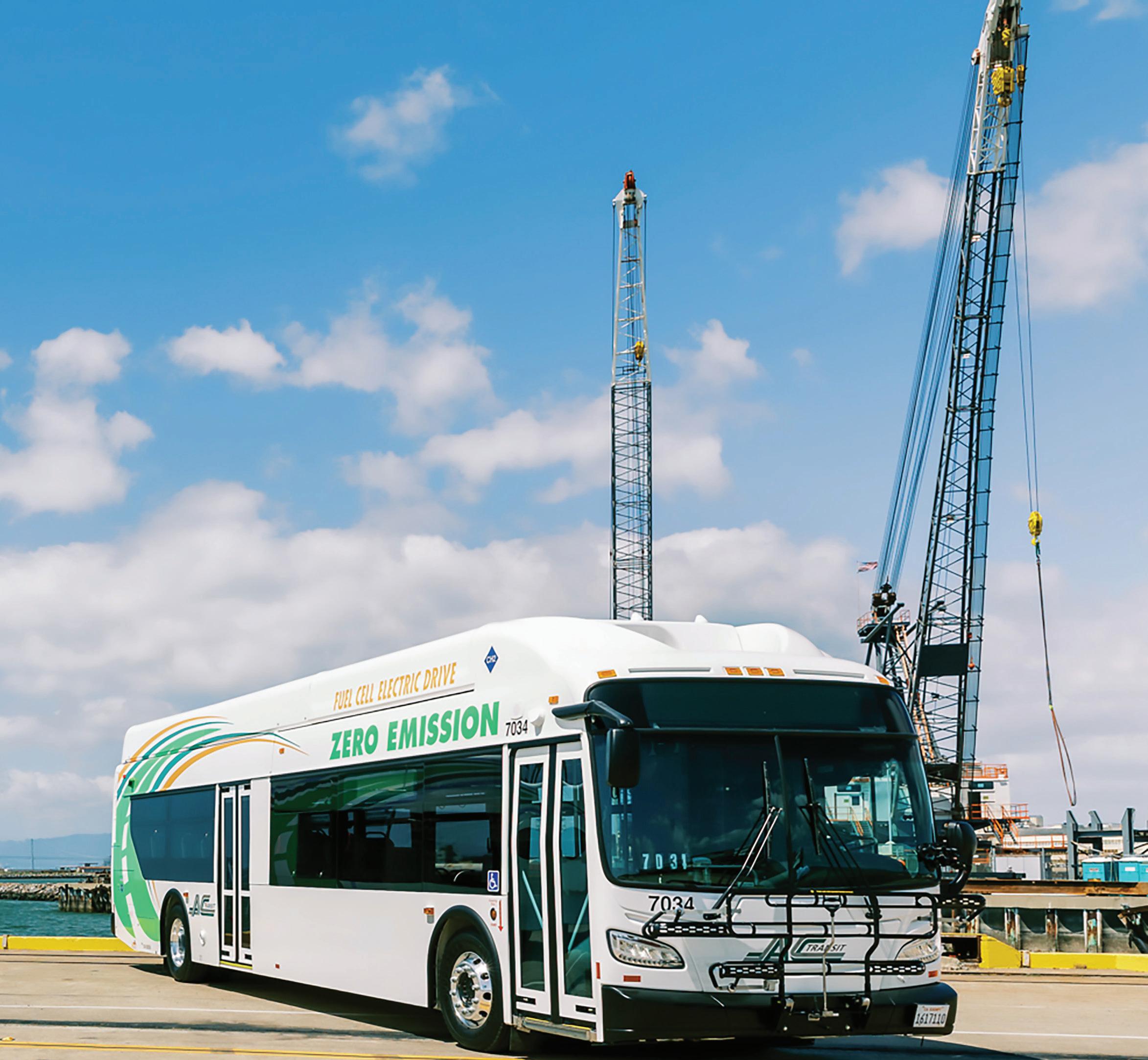

The public transit industry is working to eliminate its greenhouse gas emissions one bus at a time. Public transit systems across the U.S. are embracing the challenge of reducing their carbon footprints while providing e cient, reliable service to communities. Among the leaders in this transition is the Alameda-Contra Costa Transit District (AC Transit), who has been on the road to implementing a zero-emissions eet since 1999. For the past 25 years, the agency’s mission has focused on improving air quality within its most densely populated service areas.

The ZETBTA study tested the performance and feasibility of integrating fuel-cell electric buses, battery-electric buses, legacy fuel cells buses and diesel hybrid buses. These four technologies were compared to a conventional diesel bus as a control fleet.

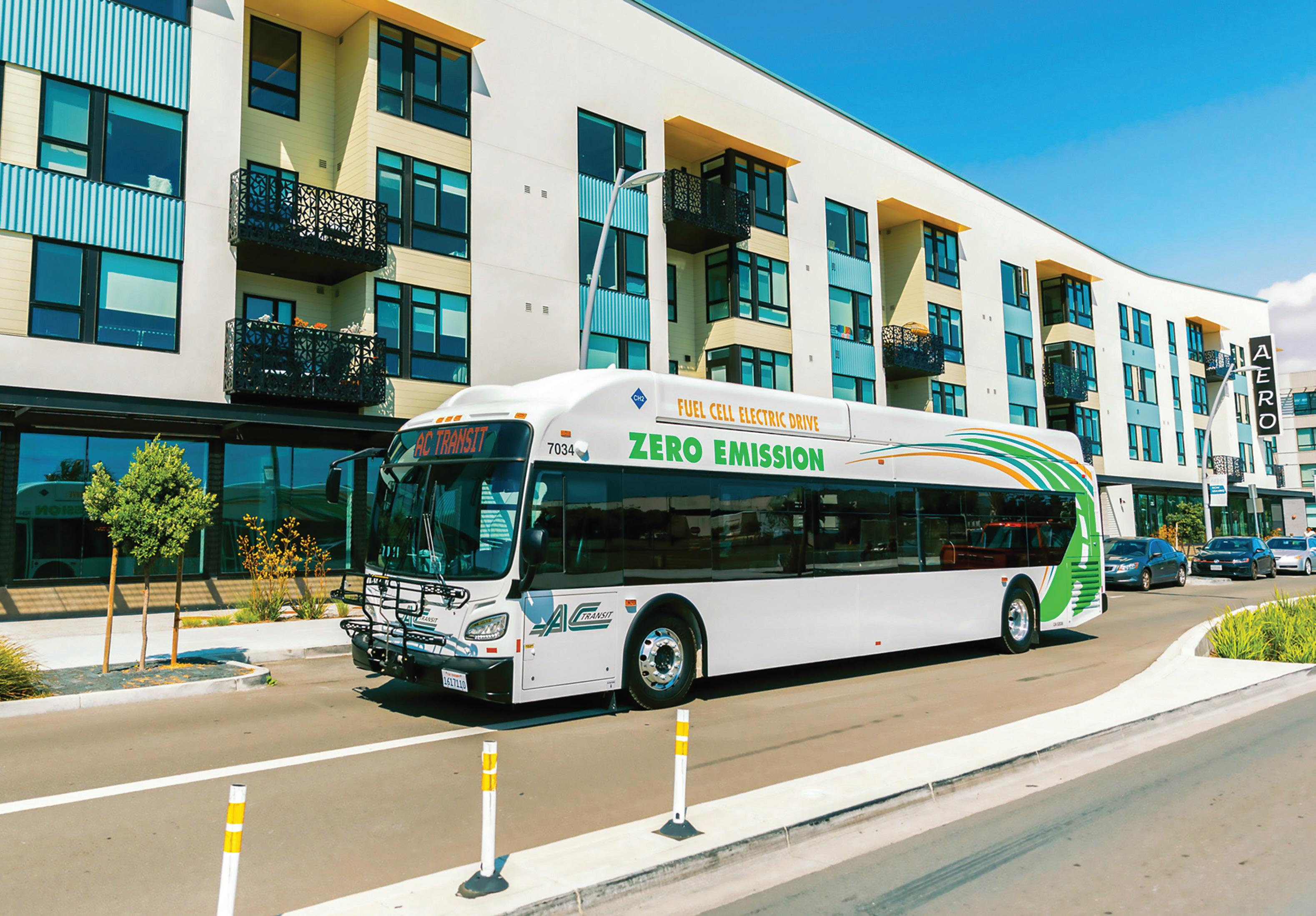
The need to improve air quality in California’s Bay Area, particularly in the East Bay, pushed the state into action as many cities faced high levels of nitrogen oxides (NOx), particulate matter and other harmful pollutants commonly associated with diesel-powered vehicles. Diesel buses, which made up the majority of AC Transit’s fleet at the time, were a major source of these pollutants.
AC Transit’s mission to explore cleaner buses to better serve its community was fortified through the California Air Resources Board’s (CARB) adoption of the Innovative Clean Transit (ICT) regulation in 2017, which mandated a state-wide gradual transition to a 100 percent zero-emissions fleet by 2040.
With the surge of national interest in zero-emission vehicles, charging infrastructure and proper maintenance methods, AC Transit worked to set the standard of reference for agencies adhering to state mandates. The agency wanted to explore which buses had the best propulsion system.
In 2021, AC Transit launched its Zero Emission Transit Bus Technology Analysis (ZETBTA), a comprehensive research
and planning project, in partnership with Stanford University, aiming to transform its transit network and develop a better understanding of how to effectively integrate zero-emission buses (ZEBs) into its existing service schedules, rather than modifying schedules to fit the buses.
The ZETBTA study tested the performance and feasibility of integrating fuel-cell electric buses (FCEB), battery-electric buses (BEB), legacy fuel cell buses (FC) and diesel hybrid buses. These four technologies were compared to a conventional diesel bus as a control fleet.
The study called for five of each engine propulsion systems to operate throughout the agency’s service areas, earning the nickname the “5x5 Study.”
Stanford students and faculty analyzed the performance data collected during the study, focusing on range, operational efficiency and maintenance needs.
“We wanted to partner with a university renowned for energy, environmental and sustainable sciences that could do a deeper dive analysis into the environmental impacts and components of transit bus operations,” said AC Transit Chief Operating Officer Salvador Llamas. “We also wanted to validate our formulas and the resulting data to ensure that there was no bias, and a clarification on accuracy of the data itself.”
AC Transit says these real-world simulations helped to develop a better idea of the projected long-term performance and cost effectiveness of different zero-emission technologies. These models took into account factors such as energy consumption, vehicle lifespan, total cost of ownership and maintenance requirements. The simulations helped predict how these buses would perform over time, both in terms of operational efficiency and environmental impact.
The 5x5 Study’s results were released in four complete volumes that detailed AC Transit’s evolving processes and discoveries along the way. AC Transit’s approach included:
1. Data collection and analysis : The study started with a comprehensive review of existing routes, ridership patterns and operational data to understand where improvements were needed most.
2. Stakeholder engagement: Community feedback was gathered through meetings and surveys to ensure the study aligned with the needs of riders and the broader community.
3. Pilot programs : As part of the study, pilot projects were rolled out to test specific changes, such as new route configurations and higher bus frequencies.
4. Strategic recommendations: The final phase of the study resulted in the presentation of recommendations that
would help improve routes, with a focus on sustainable transit and the gradual adoption of ZEBs.
This process was marked by a strong emphasis on collaboration, data-driven decision making and a commitment to addressing both immediate and long-term needs of the community. Each volume of the study helped to establish a better picture of what AC Transit’s system needed out of the buses it was testing.
AC Transit’s strategic recommendations from the fourth and final volume of the 5x5 Study summarized its findings over the past two years, highlighting fleet availability, fuel efficiency levels and the mileage each type of bus was able to travel before requiring maintenance.
As part of the 5x5 Study, AC Transit measured the fleet availability for morning pull out. In the third volume of the study (from July 2021 to December 2021), it was found that FCEBs were available 65 percent of the time while BEBs were available 60 percent of the time. The legacy FC fleet was considered available for operation 50 percent during that period, and diesel hybrid buses were available for service 63 percent of the time. Diesel buses came in at a reliable availability of 90 percent.
We wanted to partner with a university renowned for energy, environmental and sustainable sciences that could do a deeper dive analysis into the environmental impacts and components of transit bus operations.”
Salvador Llamas, Chief Operating Officer,
AC Transit
In comparison, the final volume of the study (between January 2022 through June 2022) found the FCEB fleet was available for 78 percent of the time and had one bus account for almost half of the days due to a Vanner DC converter issue.
The BEB fleet showed a 66 percent availability, with more than half of the total days related to a retrofit of the charger cabling and programming by the original equipment manufacturer (OEM). The legacy FC fleet, affected by low output power of the fuel cell of several units, operated at an average availability of 57 percent. The hybrid fleet came in at an average of 51 percent due to two engine failures and supply chain issues.
The report also found the diesel fleet displayed a higher average of availability; over 89 percent of buses did not experience a pattern of chronic issues. AC Transit notes the overall availability of all fleets continues to be impacted by supply chain delays.
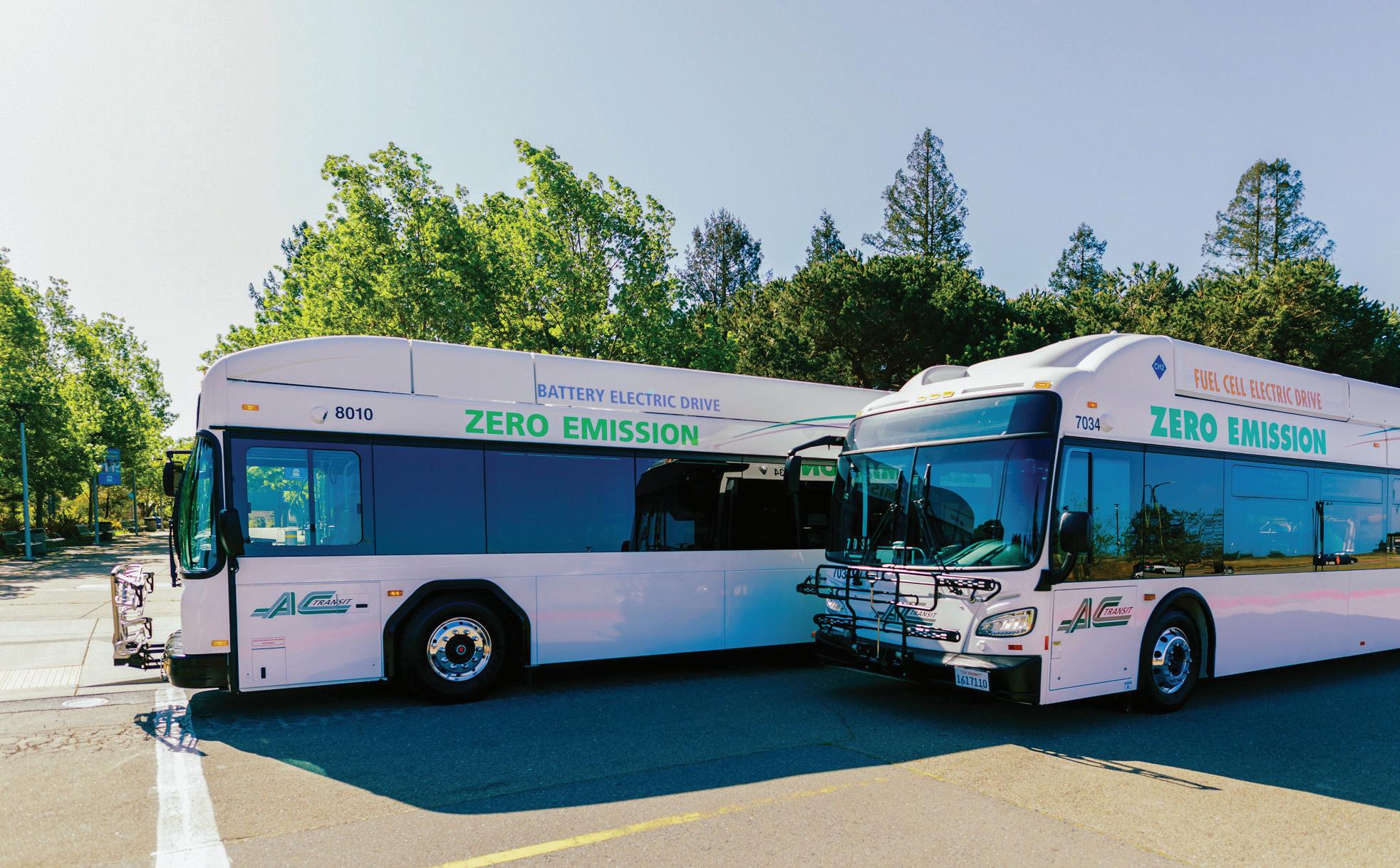
The study showed the FCEB can travel 300 miles with one fill that takes up to six to eight minutes to refuel while the BEB can only travel 170 miles before needing to recharge for three to four hours. Llamas says this is an operational complication that has led to the agency’s decision to move forward with a zero-emissions plan that calls for 70 percent of its fleet to become FCEB and 30 percent BEB at each one of its properties.
According to Llamas, the decision was made after the federal government put out a requirement for a transition plan to be announced in order for AC Transit to apply for loans or grants.
AC Transit plans to replace vehicles at the end of their useful life under the Transit Asset Management (TAM) Plan, guided by these ZEB transition principles that align with federal and state regulations and transit district board policy:
• Replace the fleet per FTA-mandated TAM Plan targets.
• Prioritize ZEB deployment per the Clean Corridors Plan.
• Procure ZEBs based on technology and service needs.
• Deploy sustainable ZEB technology.
• Achieve the 2040 Innovative Clean Transit goal.
The agency is also working on improving the infrastructure needed to support a BEB fleet by installing charging stations at key depots. The agency’s newest installation features the ChargePoint Express Plus, which is configured with one charger connected to two dispensers and allows the agency to charge its buses faster and efficiently.
These new updates to AC Transit’s bus fleet require employees to keep pace with changing technologies. AC Transit mechanics and other support employees are put through a workforce development program that focuses on cultivating
AC Transit’s 5x5 Study compared the differences in energy consumption, vehicle lifespan, total cost of ownership and maintenance requirements.
Photo: Alameda-Contra Costa Transit District
an understanding of common issues ZEBs experience based on the OEM.
AC Transit is working to enhance this program through its newly launched Zero Emission Bus University (ZEBU), which features virtual training courses. One course focuses on the Zero Voltage Test, which AC Transit says enables mechanics to practice the necessary steps to ensure a vehicle is in a safe state before performing maintenance. The agency wants to provide a safer opportunity for mechanics to become familiar with the process ahead of time, preparing them for when the procedure is needed.
“Much of what we do in the zero emission maintenance environment can pose dangerous risks,” commented AC Transit Media Affairs Manager Robert Lyles. “What we want to do is to remove any risk from those who are training, and the virtual environment allows us to do that.”
AC Transit says its success with its gradual transition to a zero-emissions fleet is owed to a great amount of collaboration, support and the response from the bus and infrastructure manufacturers who are working with the agency to resolve challenges and evolve the technology.
Llamas says that AC Transit’s workforce is empowered by teamwork and ingenuity. “The [employees] have this can-do attitude,” Llamas noted. “When something fails, the easy thing to do is to park it and give it back to the bus manufacturer. Our employees work to figure out how to fix it and make it better, and I think that’s what’s different about our culture, our workforce and organization.”
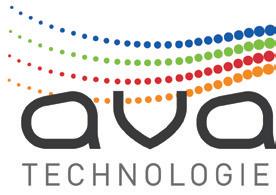


Today’s riders expect real-time updates on arrivals, departures and potential disruptions to their daily commute. Providing timely information and enhancing the overall rider experience can be achieved through on-board and wayside displays, delivering critical updates when and where they are needed most.
What types of real-time information can digital signage provide to transit riders?
Digital signage systems can provide a wide range of real-time information to enhance the passenger experience. is includes live updates on bus and train arrival times, service delays, route changes and emergency alerts. Additionally, they can display information about transfers, alternate routes during disruptions and even current crowd
levels on upcoming vehicles. Advanced systems also integrate with weather services and local news feeds to o er comprehensive updates that keep riders informed throughout their journey.
How do digital signage systems improve accessibility and inclusivity in public transit?
Digital signage is designed to meet the needs of diverse populations, ensuring inclusivity across transit systems. Many systems feature multi-language support to cater to non-English speakers while others o er audio announcements for visually impaired passengers. High-contrast displays and adjustable font sizes enhance readability for individuals with visual impairments. Additionally, strategically placed signage at accessible heights ensures that
information is available to wheelchair users and individuals with other mobility challenges, promoting a more inclusive transit environment.
What technologies are being used to enhance digital signage capabilities in public transit?
Cutting-edge technologies are revolutionizing digital signage in public transit. Cloud-based platforms enable remote content management and real-time updates across multiple locations, ensuring consistency and accuracy. Touchscreen displays and interactive kiosks are also becoming more common, allowing passengers to access personalized travel information, plan multi-modal trips and even receive noti cations via QR codes and mobile integration.
What are the key benefits of upgrading digital signage in transit systems?
Upgrading digital signage o ers several key bene ts for both transit agencies and passengers. For riders, it provides greater convenience and peace of mind by delivering accurate, real-time updates that reduce uncertainty and improve trip planning. For agencies, modern signage helps streamline operations by reducing the need for printed schedules and manual updates, leading to cost savings and improved e ciency. Furthermore, digital signage can serve as a valuable communication tool during emergencies, ensuring passengers receive critical safety information promptly. As public transit continues to evolve, digital signage will remain a cornerstone of passenger engagement and operational e ciency. By investing in advanced signage solutions, agencies can enhance the travel experience, build trust with riders and streamline their own operations.
About the author

This annual survey captures what is ahead by asking subscribers about budgets, procurement and general sentiment about the year.
BY MEGAN PERRERO, EDITOR IN CHIEF
Now in its sixth iteration, Mass Transit’s annual Mobility Outlook Survey aims to capture a snapshot of the year ahead— from budgets and vehicle procurements to state of good repair backlogs and cybersecurity initiatives. While a majority of transit agencies report a slightly higher budget compared to 2024, reduced ridership from the pandemic continues to have the largest impact. One agency respondent noted in a comment their “ridership is up due to microtransit, but the fixed routes operated were cut in half due to COVID ridership losses.” Despite this
challenge, the majority of responding agencies said they have expanded services during the past year.
As agencies expand services, they’ll need the manpower to support these efforts, but challenges in recruitment and retention continue to be the biggest concern. However, agencies are looking to enhance their service reliability and see opportunities to invest in technology that will improve the rider experience.
On the private sector side, companies anticipate business to be up compared to 2024 numbers, but they expect to deal with challenges related to inflation and a decrease in federal funding and support. Similar to the agencies, companies see opportunities to improve the customer experience and are excited about new collaborations, with one respondent noting they are considering expanding internationally. Read the full report at www.MassTransitmag.com/55264145.
How was this information gathered?
Mass Transit queried subscribers who identify as working for a transit agency or for a business supporting transit agencies (suppliers, manufacturers, consultants, engineers) during a twoweek period in January 2025. The survey received 337 responses, with 131 from transit professionals and 206 from non-transit agency professionals. The survey included separate questions for the two groups.
While it would be ideal to receive a response from every transit operator in North America, we understand that this is not practical. However, we believe the data from this survey provides compelling insights into what the industry will face in 2025.
Where responding agencies are located
New England/Middle Atlantic (Maine, New Hampshire, Vermont, Connecticut, Rhode Island, Massachusetts, New York, New Jersey, Pennsylvania)
New England/Middle Atlantic (Maine, New Hampshire, Vermont, Connecticut, Rhode Island, Massachusetts, New York, New Jersey, Pennsylvania)
New England/Middle Atlantic (Maine, New Hampshire, Vermont, Connecticut, Rhode Island, Massachusetts, New York, New Jersey, Pennsylvania)
New England/Middle Atlantic (Maine, New Hampshire, Vermont, Connecticut, Rhode Island, Massachusetts, New York, New Jersey, Pennsylvania)
South Atlantic (West Virginia, Maryland, Delaware, Virginia, North Carolina, South Carolina, Georgia, Florida)
South Atlantic (West Virginia, Maryland, Delaware, Virginia, North Carolina, South Carolina, Georgia, Florida)
South Atlantic (West Virginia, Maryland, Delaware, Virginia, North Carolina, South Carolina, Georgia, Florida)
South Atlantic (West Virginia, Maryland, Delaware, Virginia, North Carolina, South Carolina, Georgia, Florida)
South (Texas, Oklahoma, Arkansas, Louisiana, Kentucky, Tennessee, Alabama, Mississippi)
South (Texas, Oklahoma, Arkansas, Louisiana, Kentucky, Tennessee, Alabama, Mississippi)
Midwest/Plains (Ohio, Indiana, Illinois, Michigan, Wisconsin, Minnesota, Iowa, Missouri, North Dakota, South Dakota, Nebraska, Kansas)
South (Texas, Oklahoma, Arkansas, Louisiana, Kentucky, Tennessee, Alabama, Mississippi)
South (Texas, Oklahoma, Arkansas, Louisiana, Kentucky, Tennessee, Alabama, Mississippi)
Midwest/Plains (Ohio, Indiana, Illinois, Michigan, Wisconsin, Minnesota, Iowa, Missouri, North Dakota, South Dakota, Nebraska, Kansas)
Midwest/Plains (Ohio, Indiana, Illinois, Michigan, Wisconsin, Minnesota, Iowa, Missouri, North Dakota, South Dakota, Nebraska, Kansas)
Midwest/Plains (Ohio, Indiana, Illinois, Michigan, Wisconsin, Minnesota, Iowa, Missouri, North Dakota, South Dakota, Nebraska, Kansas)
Mountain (Montana, Colorado, Wyoming, Arizona, New Mexico, Utah, Idaho, Nevada)
Mountain (Montana, Colorado, Wyoming, Arizona, New Mexico, Utah, Idaho, Nevada)
Mountain (Montana, Colorado, Wyoming, Arizona, New Mexico, Utah, Idaho, Nevada)
Mountain (Montana, Colorado, Wyoming, Arizona, New Mexico, Utah, Idaho, Nevada)
(Alaska, Oregon, Washington, California, Hawaii)
Pacific (Alaska, Oregon, Washington, California, Hawaii)
Canada East and Middle (Newfoundland and Labrador, PEI, Nova Scotia, New Brunswick, Quebec, Ontario, Manitoba)
(Alaska, Oregon, Washington, California, Hawaii)
Pacific (Alaska, Oregon, Washington, California, Hawaii)
Canada East and Middle (Newfoundland and Labrador, PEI, Nova Scotia, New Brunswick, Quebec, Ontario, Manitoba)
Canada East and Middle (Newfoundland and Labrador, PEI, Nova Scotia, New Brunswick, Quebec, Ontario, Manitoba)
Canada East and Middle (Newfoundland and Labrador, PEI, Nova Scotia, New Brunswick, Quebec, Ontario, Manitoba)
Canada West and North (British Columbia, Alberta, Saskatchewan, Yukon, Northwest Territories, Nunavut)
Canada West and North (British Columbia, Alberta, Saskatchewan, Yukon, Northwest Territories, Nunavut)
Canada West and North (British Columbia, Alberta, Saskatchewan, Yukon, Northwest Territories, Nunavut)
Canada West and North (British Columbia, Alberta, Saskatchewan, Yukon, Northwest Territories, Nunavut)
For which type of entity do you work?
What services does your agency provide? (select all that apply)
TRANSIT AGENCIES: How does your anticipated 2025 budget, both operating and capital, compare to 2024?
Of the agencies that reported residual impacts from the pandemic, 69% cited reduced ridership and 57% cited recruitment and retention challenges. Less then half cited budget constraints.
under $10 M
TRANSIT AGENCIES: Is your agency facing a budget shortfall in 2025?
Yes, between $10 M and $25 M
Yes,
Yes, between $25 M and $50 M
$100 M
Yes, between $50 M and $100 M
Yes, greater than $100 M No budget shortfall in 2025, but one is anticipated within the next two years
From the agencies reporting a budget shortfall in 2025, a third indicated reduced revenue from fares was a contributing factor while nearly a quarter said a lack of state level funding was a contributing factor.
BUSINESS COMMUNITY: Where do you believe revenues will be in 2025?
Significantly
BUSINESS COMMUNITY: For anticipated budget increases in 2025, where will the increase be seen? Select all that apply.
Responses from the business community show a nearly 50/50 split regarding if their organization’s budget increased for 2025.
TRANSIT AGENCIES : What challenges are anticipated in 2025? Select all that apply.
Inflation
Inflation
Delivering
Of the agencies that said recruitment was their top challenge, 78% said they raised starting salaries for new hires for positions like operators and maintenance. 63% said they were paying for some or all required specialty training.

The massive project aims to help residents in New York and New Jersey get from place to place safely for decades.
BY BRANDON LEWIS, ASSOCIATE EDITOR
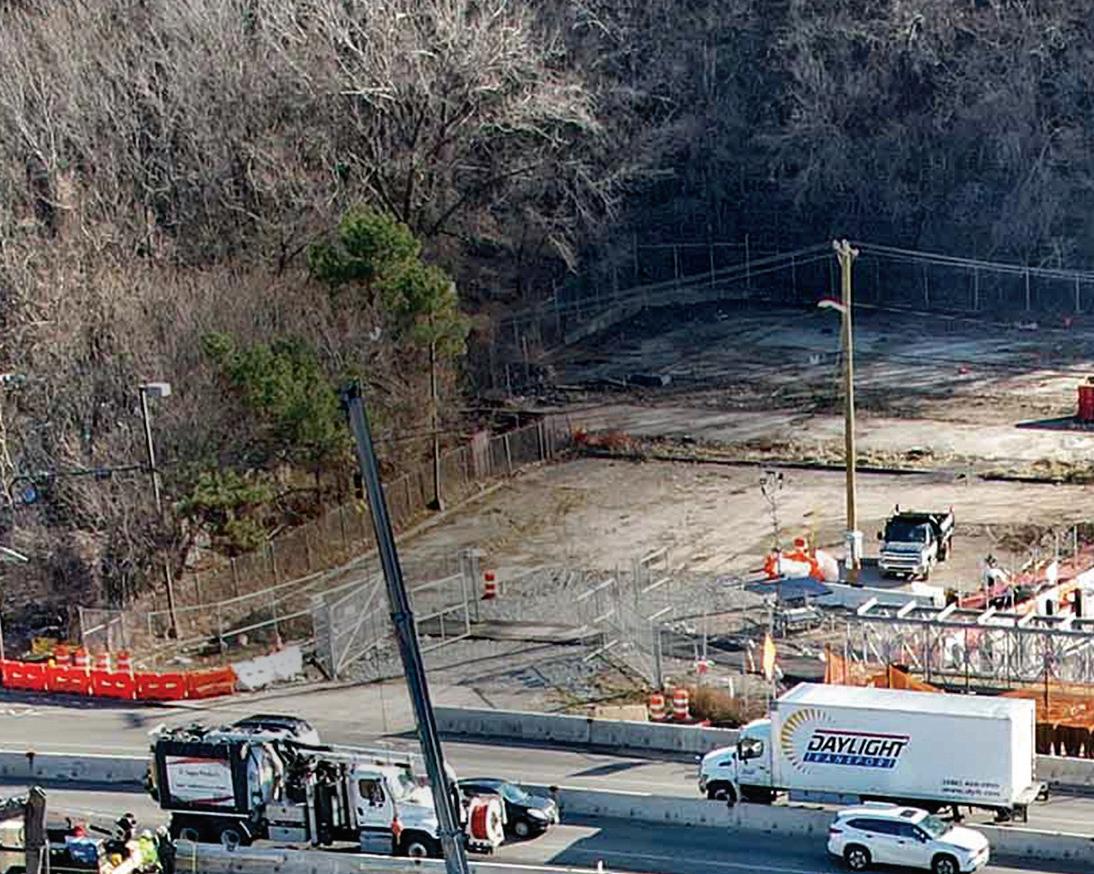

on Track to be Completed by 2035
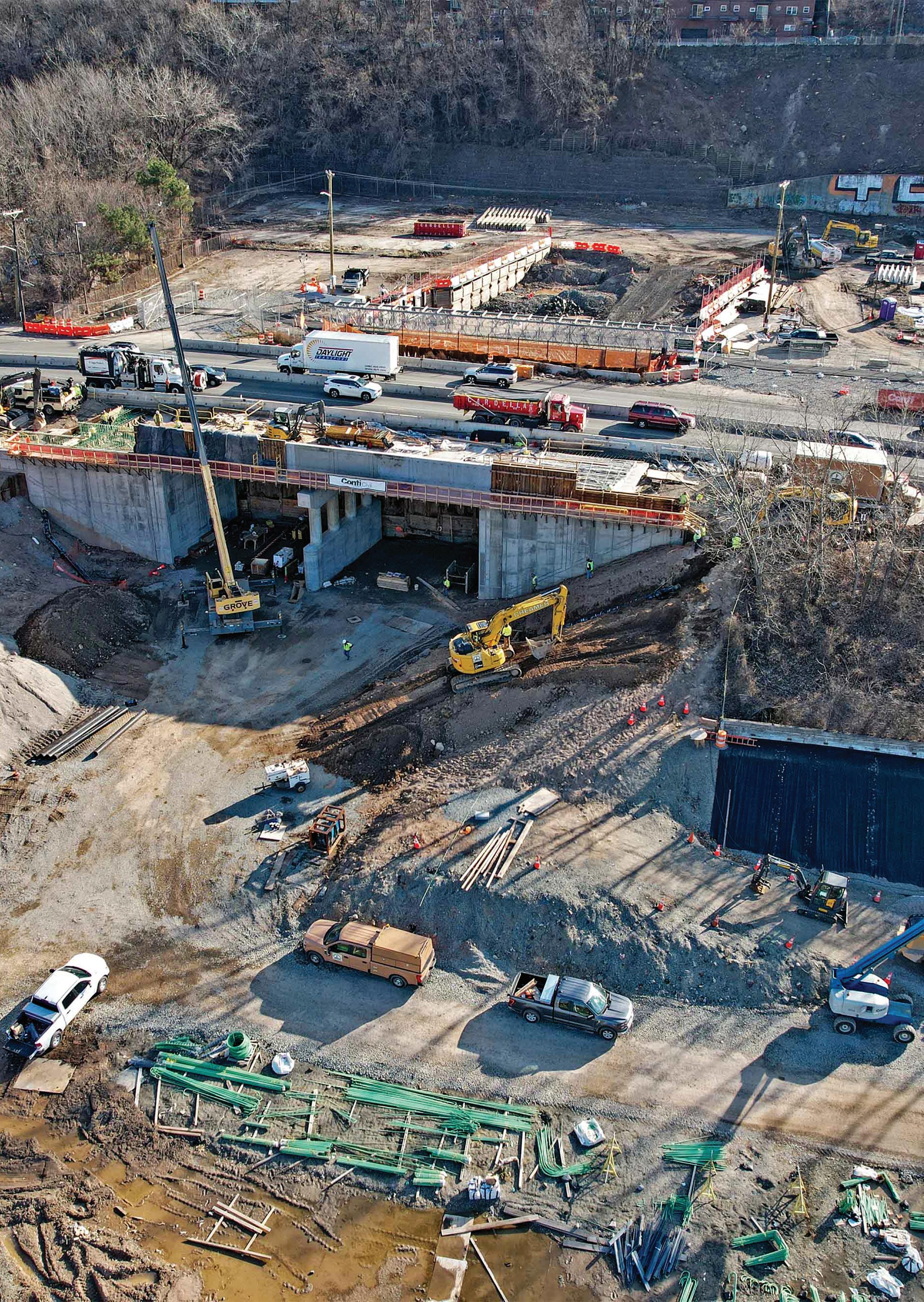
In November 2023, construction began on the Hudson Tunnel Project, one of the largest infrastructure projects in U.S. history.
The Hudson Tunnel project consists of three components:
• The construction of a two-track Hudson River rail tunnel between Bergen Palisades in New Jersey and New York Penn Station in Manhattan, N.Y.
• The building of the third and final segment that will enable the new Hudson River Tunnel to connect into New York Penn Station.
• Rehabilitation of the existing North River Tunnel, which sustained significant damage during Superstorm Sandy in 2012.
The end goal of the massive project is to provide long-term resiliency and reliability for the regional and national rail network for New Jersey Transit and Amtrak riders.
the New Jersey portion of the new Hudson River Tunnel and connect the two portions of the Tonnelle Avenue Staging Site, which is the primary staging site for the project. This project is expected to conclude in fall 2025.
In New York, work has also started on the Hudson Yards Concrete Casing, Section 3 project, which will build the third and final segment that will enable the new Hudson River Tunnel to connect into the New York Penn Station. Work on the project is expected to be completed in 2026.
Construction happening on the Tonnelle Avenue Bridge and Utility Relocation project on Jan. 3, 2025.
Photo: GDC
In 2019, the states of New York and New Jersey created the Gateway Development Commission (GDC) as a special purpose entity to build the projects of the Gateway Program, which includes the Hudson Tunnel Project. Projects for the GDC are assigned by the governors of New York and New Jersey. The GDC is made up of a seven-member board, with members representing the states of New York and New Jersey, as well as Amtrak. GDC is currently the exclusive project sponsor for the Hudson Tunnel Project.
Hudson Tunnel Project scope and timeline
According to GDC Chief of Public Outreach Steve Sigmund, the Hudson Tunnel Project comes down to the replacement of four tubes:
• The creation of two new rail tubes under the Hudson River for the first time in 115 years.
• The full rehabilitation of the existing one track in and one track out of the North River Tunnel.
Once the mega project is completed, the hope is the infrastructure will last for a century or more. Sigmund says the project is 10 miniature projects combined into one. Currently, three of the 10 miniature projects are under construction.
The project started with the Tonnelle Avenue Bridge and Utility Relocation in New Jersey, which will provide access to the entry point for tunnel boring machines that will dig
• Purpose: Create a new roadway bridge carrying Tonnelle Avenue over the future tunnel’s right of way, provide tunnel boring machine access to the entry point for digging the new Hudson River Tunnel and connect the two portions of the primary staging site for the Hudson Tunnel Project.
• Estimated construction completion: 2025
• Purpose: Link the new Hudson River Tunnel to New York Penn Station.
• Estimated construction completion: 2026
• Purpose: Stabilize the riverbed to enable the start of tunnel boring and protect the river ecosystem.
• Estimated construction completion: 2027
Heavy construction on the Hudson River Ground Stabilization project started in the summer of 2024. This project helps stabilize Manhattan’s side of the riverbed to allow the tunnel boring machines to excavate while protecting the riverbed ecosystem. Weeks Marine, Inc., was awarded the contract for the project in February. Phase one of the project included surveying, as well as design and construction of a test cofferdam to various levels of kinds of soil creep that were being created to stabilize the ground. Phase two kicked off this past fall and involves injecting grout into the silt that makes up 1,200 feet of shallow riverbed on the eastern side of the Hudson River.
In a statement to Mass Transit magazine, Weeks Marine, Inc. Project Manager John Kelly said, “The team at Weeks Marine is thrilled to have the opportunity to apply our expertise to the first heavy construction contract on the Hudson Tunnel Project. We are making great progress on riverbed stabilization and will continue to work closely with GDC to clear the way for tunneling under the Hudson.”
Sigmund says the Hudson River Ground Stabilization Project is one of the key components to ensure the tunnel stays upright.
“The natural consistency of the bottom of the river is sort of like chocolate pudding, and if you didn’t do anything there, then [the bottom of the river] would get churned up and collapse onto the tunnel, and you wouldn’t have a stable base for the tunnel to get through to get to Manhattan,” Sigmund said.
Sigmund notes work cannot be completed on the Hudson River Ground
Stabilization Project between the months of January and June due to a fish window in a certain section of the river.
“During those months, there’s sturgeons, which are these giant, dinosaur-like fish that get as long as like 14 feet, and they spawn, and they go through that section of the river, and they’re protected,” Sigmund said.
The Palisades Tunnel Project is the first tunnel boring project of the Hudson Tunnel Project and consists of two separate tunnels – each approximately 5,100-feet long and with an inside diameter of 25 feet, two inches. This project focuses on constructing the first mile of the twin tunnels on the New Jersey side of the Hudson River. Construction on the project began in 2024 after the GDC awarded a contract to Schiavone Dragados Lane JV. The project is expected to be completed by 2027.
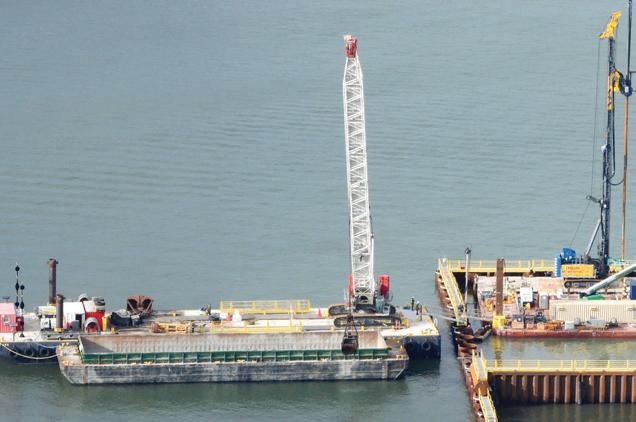
In a statement to Mass Transit magazine, Schiavone Construction Co. LLC’s Director of Engineering and Special Projects Andrejs Delle said, “Launching the first tunnel boring machines through the Palisades will be a watershed moment for the most urgent infrastructure project in the country.”
Sigmund explains why the Palisades Tunnel Project is one of the most complicated parts of the entire Hudson River Tunnel Project.
“Before doing anything on that project, we had to acquire the easements to over 200 properties that sit on top of the Palisades, which is anywhere from 80 to 250 feet above where we’re going to be digging because each of the property owners on those properties owns their property. So if you’re going under their property, even if you’re 250 feet below their property and they won’t feel a thing or know anything about it, you have to buy an easement from them, and you have to notify them,” Sigmund said.
Sigmund goes on to explain the tunnel boring process itself is not an easy one.
“You can’t use some old boring machine unless it happened to have matched up exactly with that diameter, which none ever do,” Sigmund noted. “You also have to have a very specific drill bit depending on what kind of rock you’re going through. In this case, it’s a pretty hard shale. Each of the boring machines has to be constructed separately, and they have to be constructed from the time the contract is awarded; and it takes a good year for them to actually be constructed and shipped and ready to be here.”
GDC has secured the entire $16.3 billion needed to complete the
project, with funding support coming from multiple sources:
• $6.9 billion from the Federal Transit Administration’s Capital Investment Grants Program
• $3.8 billion from the Federal Railroad Administration’s Intercity Passenger Rail Grant Program
• $2.7 billion from the Port Authority of New York and New Jersey
• $1.3 billion from the state of New York
• $1 billion from Amtrak
• $308 million from the state of New Jersey
• $292 million from the National Infrastructure Project Assistance (Mega) Grant Program
• $25 million from the Rebuilding American Infrastructure with Sustainability and Equity discretionary grant program
According to Sigmund, one of the reasons the project took so long to get off the ground is because the GDC had to demonstrate to the federal government the need for the entire scope of the project. Sigmund notes that although it took years to receive the funding, the timing of the project could not have worked out better.
“We had an administration and a White House and a Congress and a Department of Transportation and [Federal Railroad Administration] and [Federal Transit Administration] that were all aligned in supporting the project. And you had a historic Bipartisan Infrastructure Law that freed up and created funding for projects like this that had never existed before. So putting all that together in that two year kind of Goldilocks window was something that we worked very hard to do,” Sigmund noted.
When asked about whether the new Trump administration could cause concern when it comes to funding the project, Sigmund notes the project is fully funded, and that all projects take time and go through multiple leadership changes at local and national levels from the start to the completion of projects.
The project is expected to add a boost to the local and national economy, including creating more than 95,000 direct, indirect and induced jobs over the project’s construction period. The project is expected to generate $19.6 billion in economic activity over the construction period.
“This is a conduit that is the choke point on the entire Northeast Corridor between Boston and Washington, [D.C.], which is the most important economic corridor in the entire country,” Sigmund said. “It accounts for 20 percent of the nation’s economic output. It’s a $22 billion hit to property values. It’s 30 minutes more commuting a day in the most congested area in the country already and two million more tons of carbon in the air, over an already overheated atmosphere.”
The GDC is moving forward with the second phase for the Hudson River Ground Stabilization Project (HRGS) contract and is preparing for tunnel boring machine activity. GDC anticipates the HRGS Project will be completed by 2028, with a new tunnel in service by 2035.
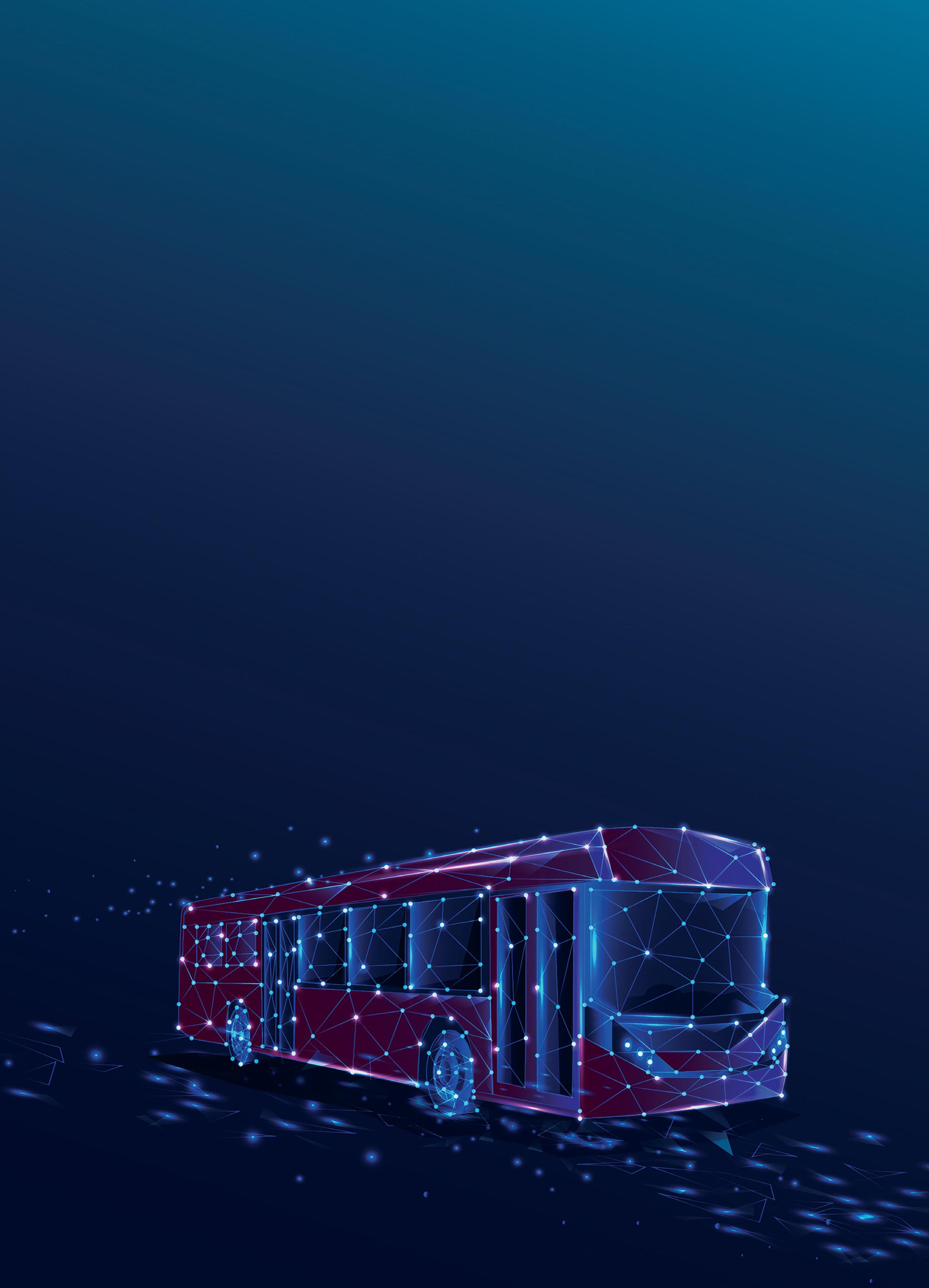






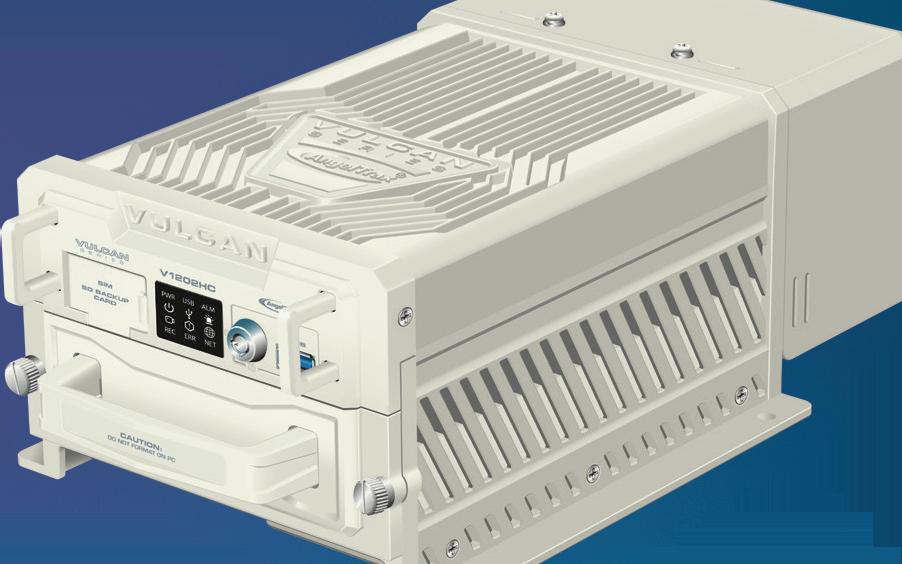

We are passionate about harnessing the power of technology to protect your video and data files on our hosted servers, ensuring top-tier security without third-party involvement. We are your trusted partner in mobile video surveillance, ever increasing safety and security for your passengers, your team and your fleet.



















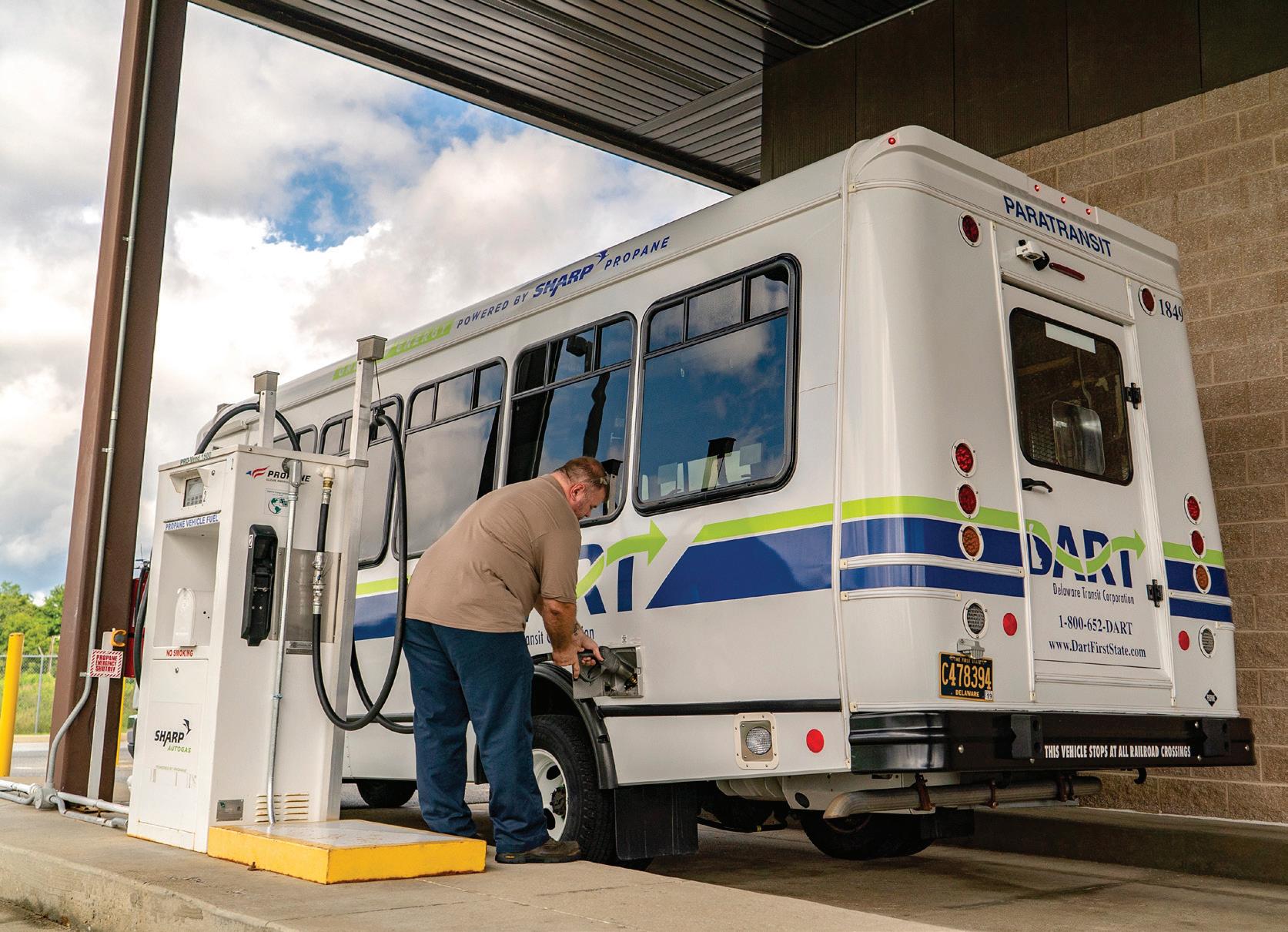
DART pays about 50 percent less per gallon for propane autogas compared to the price of gasoline.
The reliability of propane autogas ensures that paratransit services remain consistent and uninterrupted, a critical factor for passengers who depend on these services for daily transportation.
BY BRIDGET KIDD, CONTRIBUTOR
As energy costs rise and emissions standards become more stringent, paratransit fleets are turning to propane autogas. Several recent studies have shown the effectiveness of propane autogas for paratransit fleets seeking to lower both emissions and operational costs while reliably meeting their performance needs.
In New Mexico, the Land of Enchantment Clean Cities Coalition conducted a study showing that propane autogas offers paratransit fleets lower fuel and maintenance costs compared to other energy sources. The study compared mid-sized transit buses operating on the baseline conventional unleaded gasoline and a variety of alternative fuels — propane autogas, compressed natural gas and ethanol E85, as well as electric.
Over the course of two years and 38,500 miles, the study evaluated factors such as fuel economy, cost-per-mile and more. The results showed propane autogas reduced lifetime fuel and maintenance costs by $20,000 compared with the next best alternative fuel. The cost-per-mile for propane autogas was eight cents cheaper than its closest alternative fuel competitor, and it was the only fuel that proved to be less expensive than the gasoline baseline. When compared to electric paratransit buses, propane autogas saved approximately 16 cents per mile and will save more than $43,000 in lifetime fuel and maintenance costs.
As this study shows, when factoring in the cost of a new vehicle- regardless of fuel type-and the costs for fuel fluids, maintenance and repairs over the lifetime of the vehicle, propane autogas beats the total cost of ownership of other alternative and traditional energy sources.
Another U.S. fleet seeing similar successes with propane autogas is Delaware Area Rapid Transit (DART), which is operated by the Delaware Transit Corporation. It runs 258 Ford E-450 Super Duty propane autogas paratransit vehicles. The vehicles operate throughout the state, providing paratransit services to residents. When DART began transitioning to propane autogas, its first five vehicles collectively traveled 450,000 miles, experienced no fuel system-related failures and saved the agency $15,000 in fuel costs alone. Based on that successful test, DART has continued to add more vehicles to the fleet and is on track to transition to a 100 percent propane autogas fleet by 2030.
DART pays about 50 percent less per gallon for propane autogas compared to the price of gasoline. The agency’s propane autogas paratransit bus fleet achieves a 36 percent reduction in cost
per mile, equating to 19 cents per mile for propane autogas buses versus 30 cents per mile for gasoline buses.
Not only was DART able to reduce costs, but the agency has also significantly reduced its emissions profile since adopting propane autogas vehicles, resulting in cleaner air for employees, passengers and the communities in which it operates.
Propane autogas paratransit buses cut greenhouse gases by up to 22 percent and reduce carbon monoxide by 60 percent. For DART’s fleet, each bus produces 91,000 fewer pounds of carbon dioxide emissions over the lifetime of the vehicle.
Today’s ultra-low NOx propane autogas engines reduce harmful nitrogen oxide emissions by 94 percent compared with diesel and are 90 percent cleaner than Environmental Protection Agency standards. The engines also produce virtually zero particulate emissions. Cutting these emissions is important for local communities because NOx and particulate matter are known to exacerbate breathing conditions like asthma, bronchitis and other respiratory issues. As cities and states adopt more stringent air quality regulations, the environmental advantages of propane autogas consistently meet or exceed these requirements.
Beyond providing lower emissions for the community, propane autogas paratransit vehicles are also reliable and perform well in diverse weather conditions. In below freezing temperatures, propane autogas vehicles start at the turn of the key and warm up quickly. Comparatively, diesel fuel can gel during cold weather, so engines must idle to warm up and work harder to stay warm in cold weather conditions. The reliability of propane autogas ensures that paratransit services, like those provided by DART, remain consistent and uninterrupted, a critical factor for passengers who depend on these services for daily transportation.
Paratransit fleet owners have several
options when it comes to selecting an energy source, but as these studies show, propane autogas offers compelling financial and environmental advantages for fleet owners.

Bridget Kidd is c hief o perating o fficer for the Propane Education & Research Council. S he can be reached at bridget.kidd@propane.com.





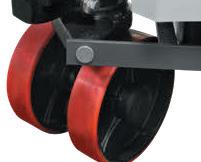
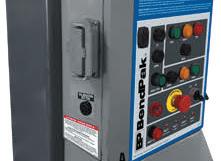
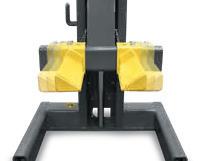
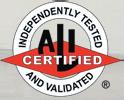


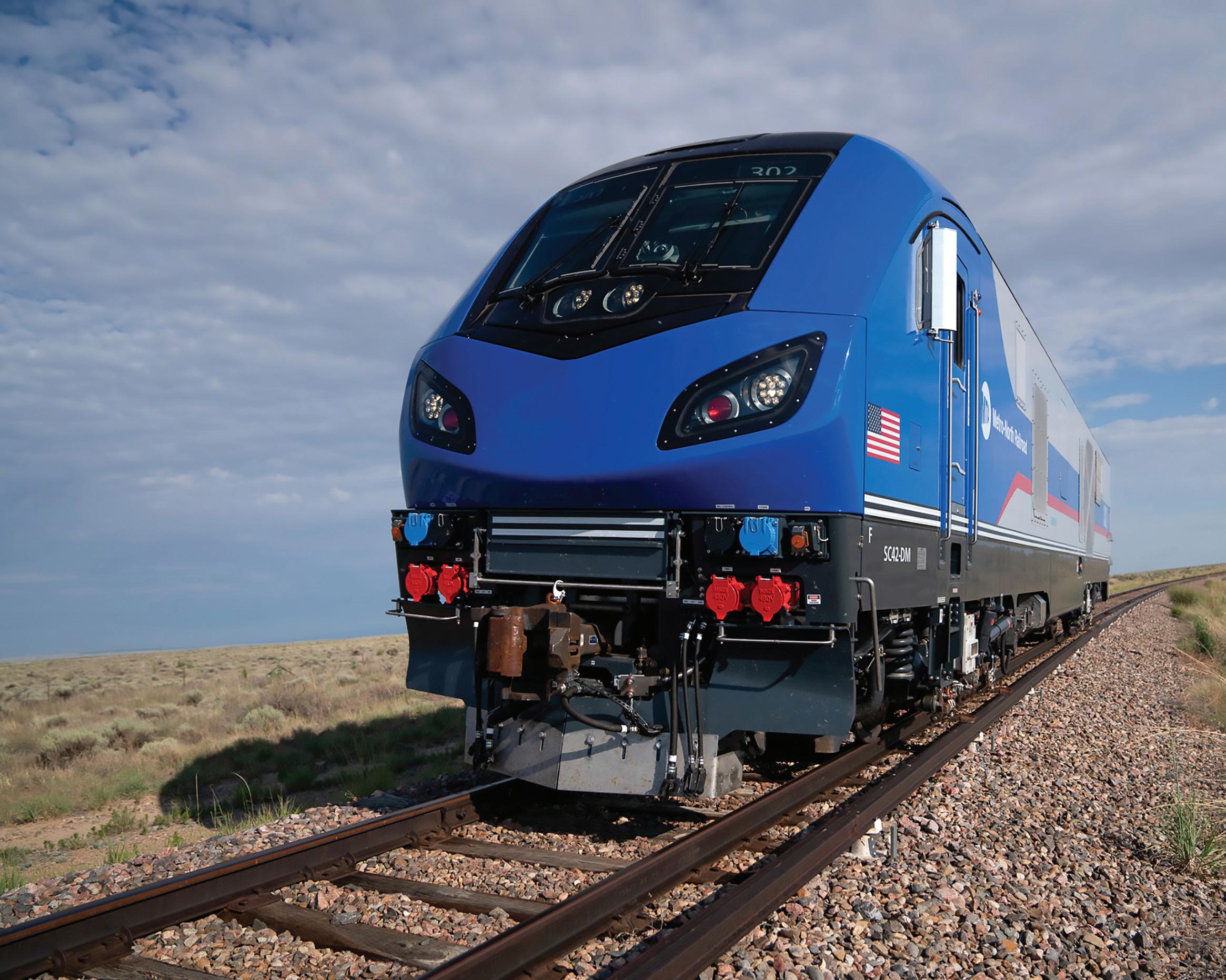
As demand for rail travel increases and sustainability becomes a central focus, dual-mode technology is set to play a pivotal role in shaping the future of passenger and commuter rail.
BY ACACIA REBER, CONTRIBUTOR
Metro-North’s Siemens Mobility Charger SC42-DM locomotive is designed to operate on diesel and third rail electricity.
Electrification has been a foundation of sustainable propulsion in the rail industry for over a century. Since the debut of the first electrified rail line in the U.S. 130 years ago, electrification has played a critical role in improving operational efficiency and reducing greenhouse gas (GHG) emissions. Today, as rail systems adapt to modern sustainability goals, dual-mode locomotive technology is emerging as a key solution.

The Transportation Technology Center (TTC) in Pueblo, Colo., operated by ENSCO, is uniquely equipped to support the testing and development of this technology. With dedicated electrified test tracks, advanced testing capabilities and a focus on innovative solutions, the TTC is helping rail operators transition to more efficient and environmentally friendly operations.
The case for dual-mode locomotives
Dual-mode locomotives combine diesel and electric propulsion, offering significant flexibility for rail systems that operate on both electrified and non-electrified tracks. This capability eliminates the need for separate fleets, reducing operational complexity and costs. Operating in electric mode significantly decreases GHG emissions, aligning with sustainability goals. In urban areas, the use of electric propulsion reduces noise pollution, improving the quality of life for communities near rail lines. Additionally, the ability to operate in both modes minimizes fuel consumption when in electrified territories, contributing to cost savings and environmental benefits.
This adaptability represents a transformative step toward a greener future for rail transportation. Dual-mode technology integrates with existing infrastructure, accelerating progress toward carbon reduction goals while avoiding the costly, time-intensive process of full network electrification. By bridging gaps in electrified infrastructure, dual-mode locomotives can enable efficient and sustainable operations across diverse rail systems. This approach supports a more inclusive transition
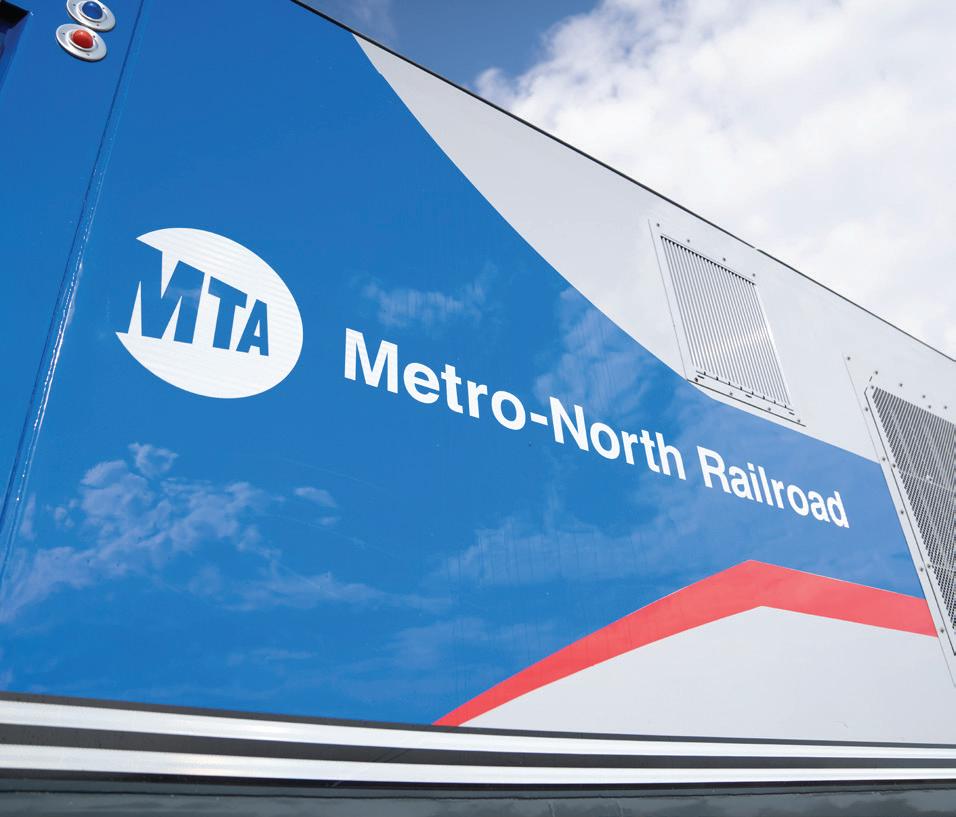
These units are designed to be more reliable while reducing emissions and noise in densely populated urban areas.
to environmentally friendly practices, paving the way for a rail industry that balances efficiency, cost-effectiveness and environmental stewardship.
The Siemens Mobility Charger SC42-DM locomotives exemplify these advancements. Designed to operate on diesel and third rail electricity, these locomotives can enhance operational flexibility and help reduce fleet emissions while meeting growing sustainability demands.
The TTC is the only rail testing facility in the world equipped with both overhead wire catenary and third rail electrification. These unique capabilities make it an ideal location for dual-mode locomotive testing, supporting the development and validation of cutting-edge rail technologies.
The rail transit track loop (RTT), spanning 13.5 miles, supports speeds of up to 165 mph and features adjustable AC overhead wire catenary. The 15-megawatt substation enables voltage adjustment between 12.5 kV and 50 kV AC, accommodating a wide range of testing scenarios. Complementing this is the transit test track (TTT), a 9.1-mile track that includes DC third rail and a two-mile section of DC overhead wire catenary. These configurations replicate real-world conditions for subway, light rail and commuter rail systems, providing a controlled environment for precise and repeatable testing.
The Siemens Mobility Charger SC42-DM locomotives underwent extensive testing on the TTT, specifically to validate their performance under third rail electrification. This rigorous process involved evaluating the transition between diesel and electric modes, verifying third rail contact consistency and assessing performance under varying voltage and load conditions. By simulating real-world operations, the testing ensured
that these locomotives met performance and safety standards, giving operators confidence in their capabilities.
The TTC’s specialized infrastructure and expertise were critical in delivering
Beyond reducing GHG emissions and noise pollution, these locomotives pave the way for a more sustainable rail network by enabling operators to make efficient use of existing infrastructure. ”
Acacia Reber, ENSCO, Inc.
reliable and timely results. Its ability to replicate complex rail environments with precision allowed Siemens Mobility to demonstrate that the Charger SC42-DM locomotives could operate
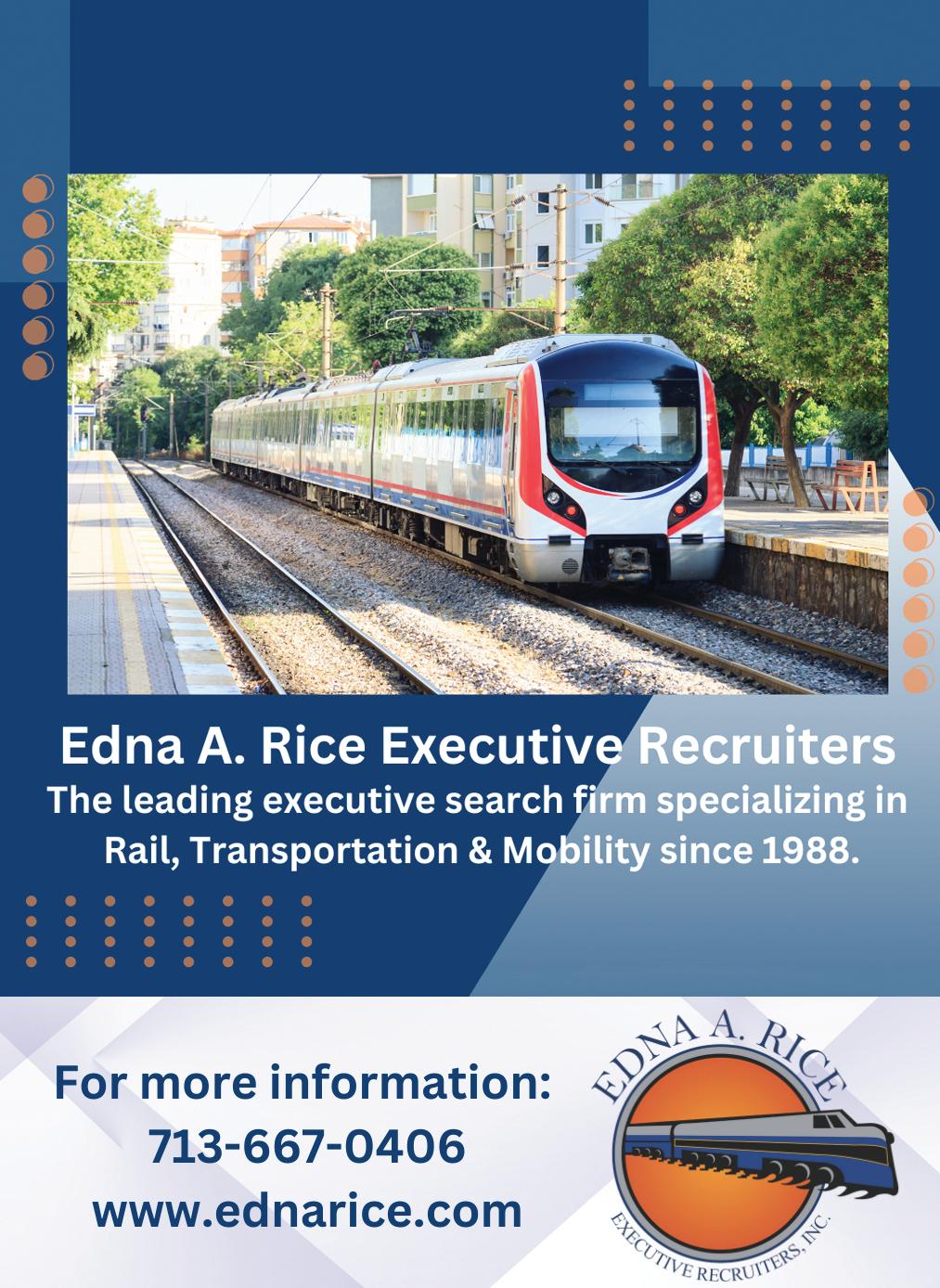
on electrified and non-electrified tracks. This collaboration highlights the importance of comprehensive testing to ensure the successful deployment of advanced rail technologies. As the rail industry continues to evolve, rigorous validation processes remain essential in bridging the gap between innovative designs and operational success.
In recent years, the rail industry has seen significant advancements in dual-mode locomotive technology, reflecting a growing commitment to operational efficiency and environmental sustainability—with the introduction of Siemens Mobility Charger SC42-DM locomotives being a major milestone. These units are designed to deliver more reliable service while reducing emissions and noise in densely populated urban areas. The adoption of this technology also aligns with regional efforts to modernize transit infrastructure and improve the passenger experience through enhanced performance and dependability.
These developments collectively illustrate a growing industry shift toward adopting dual-mode locomotives to address operational challenges and environmental concerns. Beyond reducing GHG emissions and noise pollution, these locomotives pave the way for a more sustainable rail network by enabling operators to make efficient use of existing infrastructure. As demand for rail travel increases and sustainability becomes a central focus, dual-mode technology is set to play a pivotal role in shaping the future of passenger and commuter rail.
While dual-mode locomotives are a significant step forward, the potential for innovation in sustainable rail systems extends even further. Battery electric storage systems (BESS) and hydrogen fuel cells represent promising alternatives to diesel engines. Battery-electric locomotives, for instance, can take advantage of regenerative braking and recharge while operating in electrified territories, offering additional energy savings and reduced reliance on external power sources. Hydrogen fuel cell technology, which emits only water vapor, is another potential gamechanger, though it requires substantial infrastructure investment and coordinated industry efforts to achieve widespread adoption.
These technologies could eventually replace diesel components in dual-mode locomotives, creating even more environmentally friendly solutions. However, until these advancements become mainstream, dual-mode technology serves as a practical and impactful transitional solution. By leveraging existing infrastructure and integrating emerging innovations, rail operators can achieve meaningful sustainability gains without incurring the high costs of widespread electrification. This balance between innovation and practicality positions dual-mode locomotives as a bridge to a zero-emissions future.
The adoption of dual-mode locomotives is part of a broader trend toward decarbonizing the rail industry. In recent years, rail carriers have explored alternative power options, including batteries, biodiesel and hydrogen fuel cells as pathways to reduce GHG emissions. Battery-electric locomotives offer the promise of emissions-free operations but face challenges related to range, charging times and infrastructure compatibility. Biodiesel, while a cleaner alternative to traditional fuels, depends heavily on the availability of feedstock and its environmental trade-offs. Meanwhile, hydrogen-powered locomotives hold tremendous potential but require significant investments in fueling infrastructure and supply chains.
Despite these challenges, experts believe that zero-emission locomotives could become the norm by the mid 2030s. Dual-mode technology, in the
meantime, remains an essential tool for operators balancing sustainability goals with current infrastructure limitations. By reducing emissions, improving operational efficiency and enhancing flexibility, dual-mode locomotives offer a tangible step toward achieving long-term environmental objectives while paving the way for more transformative solutions.
Dual-mode locomotives are a critical component of the rail industry’s transition to more sustainable operations. By combining diesel and electric propulsion, they provide a versatile and practical solution for addressing the challenges of mixed infrastructure and growing environmental demands. Their role as a transitional technology underscores their importance in shaping an industry committed to continuous improvement and innovation.
The TTC, with its state-of-the-art facilities and electrified test tracks, plays a pivotal role in advancing these technologies. From testing dual-mode locomotives to supporting the development of next-generation solutions, the TTC demonstrates how collaborative innovation can drive meaningful change in rail transportation. The expertise and capabilities housed at the TTC enable operators to meet current challenges while preparing for a greener, more efficient future.

the author Acacia Reber , MBA, is the director of business development for ENSCO, Inc., which operates the Transportation Technology Center in Pueblo, Colorado.

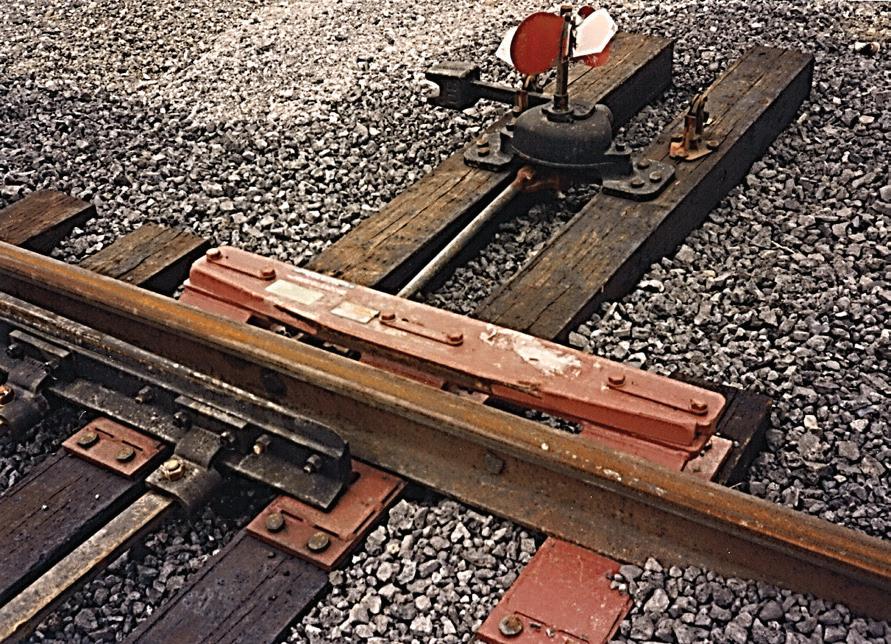
120 N.3rd. Street Richmond, Indiana 47374 (765) 962-0526 Fax (765) 966-5374 Web Site: www.wch.com E-mail: wch@wch.com
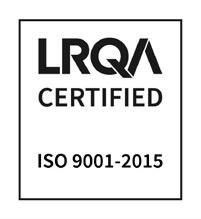

By Miki Szikszai CEO, Snapper Services
IN AN ERA WHERE PUBLIC TRANSIT networks must be more efficient, sustainable and responsive, a culture of evidence-based continuous improvement is crucial for success. The key to unlocking data’s full potential is transforming it into actionable insights that enhance operations, improve rider experiences and support sustainability goals.
“By analyzing operational performance and metrics... transit agencies can make targeted evidencebased changes that improve performance and make network savings.
Miki Szikszai, CEO, Snapper Services
The data challenge: Fragmentation and inaccuracy
Public transit agencies collect vast amounts of data daily, from ticketing and vehicle location to rider counts and environmental metrics. However, much of this data remains fragmented across multiple systems, making it difficult to create a unified view of operations. In some cases, data is incomplete or locked in proprietary systems, requiring specialized skills to access and interpret it. As a result, insights are delayed, inaccurate or unactionable, hindering timely, informed decision making.
Best practices for datadriven decision making
To overcome these challenges, public transit agencies must adopt a structured and comprehensive approach that moves beyond siloed data streams. Below are several best practices for transforming raw data into actionable insights, which can make a difference.
1. ACQUIRE, CLEAN AND FORMAT TRANSIT DATA
Effective decision making starts with collecting data from sources like vehicle location, rider feedback and operational metrics. This data needs to be cleaned, removing errors and anomalies, and formatted consistently for easier processing. While it may not always be possible to collect all data from the outset, a consistent approach enables the use of data from incompatible sources in the future. An intelligent data platform can help transit agencies
consolidate and prepare disparate data sources for information processing.
2. CONVERT DATA INTO RICH INFORMATION: UNDERSTANDING WHAT HAPPENED AND WHEN
Once data is clean and consistently formatted, patterns emerge such as service performance—like whether the right vehicle was in the right place at the right time. This processed data forms a repository of valuable information for deeper analysis.
3. TRANSFORM DATA TO KNOWLEDGE: HOW EXPERIENCE ENHANCES
UNDERSTANDING OF IMPACT IN TRANSIT
Once a set of rich information exists, analysis can uncover trends, performance and real-world impacts. With time and experience, trained transit professionals can conduct cost-benefit assessments and prioritize targeted improvements.
4. IDENTIFYING THE CAUSE: HOW TRANSIT AGENCIES CAN TAKE CORRECTIVE ACTION
Identifying root causes is the domain of transit professionals such as planners, schedulers and depot managers. Best practices enable them to assess the network from different angles, such as on-time performance, stop details or running times using their expertise to uncover insights, collaborate on solutions and prepare for change.
5. IMPROVE AND MEASURE: IMPLEMENTING ACTION PLANS TO OPTIMIZE OPERATIONS
The goal of data-driven decision making is to improve the rider experience. By analyzing operational performance and metrics like rider feedback, transit agencies can make targeted evidence-based changes that improve performance and make network savings. Once these changes are made, the cycle can iterate continuously. The service modifications generate new data that is ingested, transformed, analyzed and understood. These can be compared to prior performance and incremental improvements to the network can continue, driven by this systemic feedback loop.
Embracing a data-driven future
Agencies investing in integrated data platforms and analytics tools will improve service delivery and build a sustainable future. Reflect on how your agency uses data and which goals to prioritize.

By Maggie Clancy executive vice president, Zenobē Americas
WHILE THE U.S. counted for nearly three percent of new bus registrations as zero emissions in 2023, the U.K.’s share was 63 percent for the same period. Drawing on insights and data from work with U.K. and global transit operators, these three key strategies have been identified for successfully transitioning to a zero-emissions fleet.
1. Improving efficiency through new driver behaviors
In the U.K., targeted workforce training, triggered by regular feedback cycles, led to a noticeable reduction in energy consumption across the electric bus fleet. For example, harsh braking and rapid acceleration contribute to higher energy usage. By analyzing driver behavior data, operators have trained their drivers to smoothen their driving habits for electric vehicles.
Regular driver reviews ensure that the cycle of improvement continues. U.K. operators conduct these using real-time and historical vehicle data. With insights from their technology platform or solutions partner, they can discuss driving behavior, its impact on vehicle performance and ways drivers can optimize vehicle energy efficiency. This workforce-focused approach upskills staff in best practices, reduces energy consumption while extending battery lifespan and improves the overall rider experience.
By embedding data-driven insights into training programs, operators on both sides of the Atlantic can foster a culture of efficiency and adaptability.
2.
Optimizing charging schedules based on historical fleet data and regional energy costs has been a game changer.
Agencies can develop smart charging strategies that help minimize energy costs while ensuring fleet uptime. Charging is scheduled for off-peak hours— when electricity is cheaper—and around day-to-day operational needs, achieving substantial cost savings for U.K. transit authorities. One charging depot saved the equivalent of nearly $37,000 per month on electricity. Smart charging reduces overall op-
erational costs and can make the total cost of ownership (TCO) more attractive than diesel alternatives.
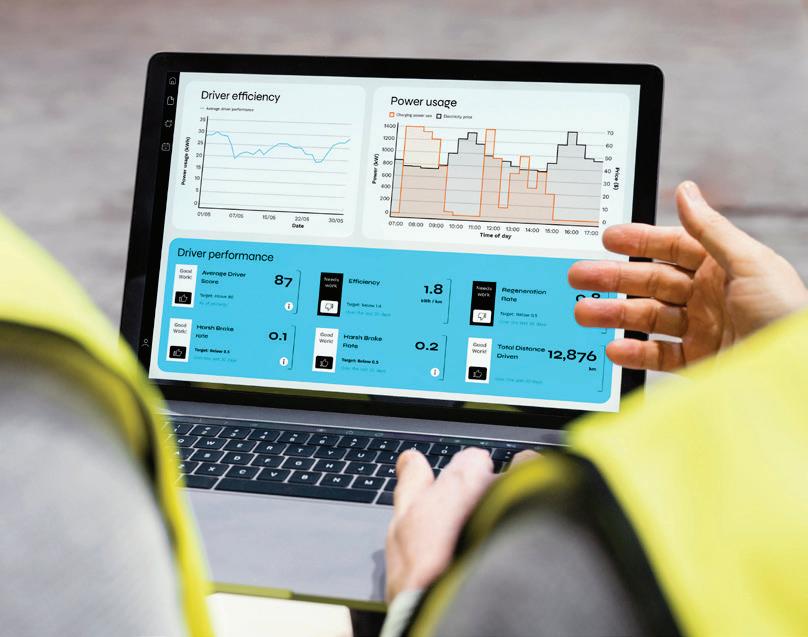
Financing zero-emission fleets poses unique challenges, yet innovative approaches have shown how to mitigate costs effectively. One strategy involves factoring battery residual value into financing models. By accurately assessing the remaining value of a battery at the end of its first life, operators can lower TCO and make electric fleets more economically viable.
A managed battery service with guaranteed performance levels exemplifies this approach. Throughout a vehicle’s lifecycle, battery performance data is collected and analyzed. Operators can then optimize battery usage and schedule replacements at the most cost-effective intervals. Additionally, the battery’s second-life potential—i.e., repurposing it for stationary energy storage at a transit depot—adds further value to the investment.
Dashboards with real-time monitoring and analytics are critical to success with this model. U.K. operators using the appropriate tools have access to detailed, up-to-date insights into battery performance, charge levels and overall fleet health for informed decision making, reduced risk and maximizing returns on their investments.
A helpful resource for more on this topic is CALSTART’s Innovative Financing Toolkit.
Coventry’s all-electric bus fleet
Coventry, England, offers a compelling example of data-driven electrification. As the first U.K. city to transition its entire 140-vehicle bus fleet to all electric, Coventry partnered with Zenobē to implement smart charging and battery management. By installing solar PV panels on unused depot roof space, an onsite microgrid was created, and the right-sized solution and grid connection ensured reliable service levels while optimizing energy costs and vehicle performance. With real-time data insights, Coventry set a benchmark for other cities aiming to electrify their transit systems.
By focusing on driver behavior, adopting smart charging practices and incorporating battery residual value into financial models, operators can achieve sustainable and economically viable electrification while reducing risk.
Dashboards can provide a visual realtime overview of the site and fleet, and useful insights into assets and performance.
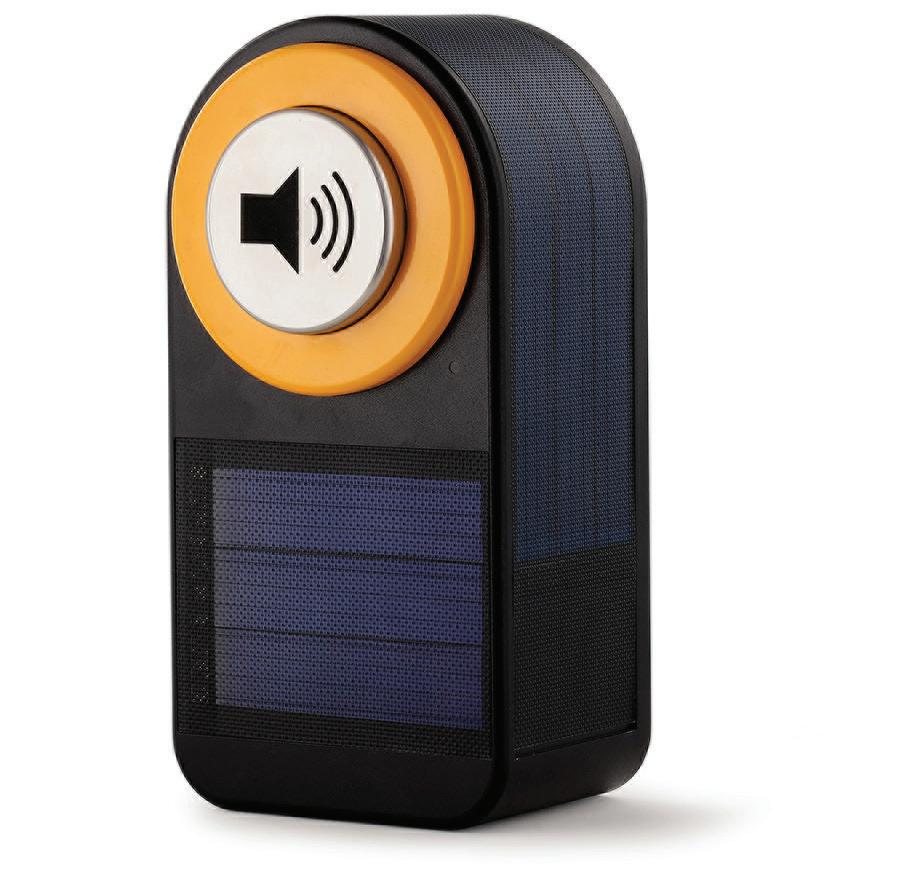
Connectpoint offers a solar-powered text-to-speech device, the Falcon, providing plug and play real-time multilingual voice announcements for next bus arrivals in an ADA-compliant housing. The design incorporates an integrated solar film skin, CAT-M1 IoT connectivity and back-up battery power. The device can be attached with an integrated locking mount to any bus stop pole. The Falcon offers a variety of dynamic messaging options, including real-time or scheduled next departure information and alerts. Additionally, introductory messages, such as PSAs, can be delivered. The system’s power, volume and content are remotely monitored and managed by the Connectpoint Asset Management System (CPAM™) from a desktop or mobile device.
CONNECTPOINT ® www.connectpoint.com

Future Systems Inc. offers agencies the detailed design and manufacture of bespoke passenger interchange shelters and station markers. Shelter designs can include custom rear windscreens and station marker coatings to reflect the characteristics and identity of various areas. This approach helps to ensure that the shelters not only meet functional requirements, but also harmonize aesthetically with the urban environment.
FUTURE SYSTEMS INC.
www.futuresystems-inc.com
ETA Transit’s SPOT™ intelligent transit system works to keep riders accurately informed across multiple channels. The SPOT platform combines real-time GPS tracking, route management and digital signage in a single solution. Riders stay updated with live announcements put out by the agency while operators can quickly adjust displays for emergencies or targeted messages. At the same time, remote configuration and analytics empower transit professionals to streamline operations, cut costs and enhance the passenger experience—all in a user-friendly system.
ETA TRANSIT etatransit.com
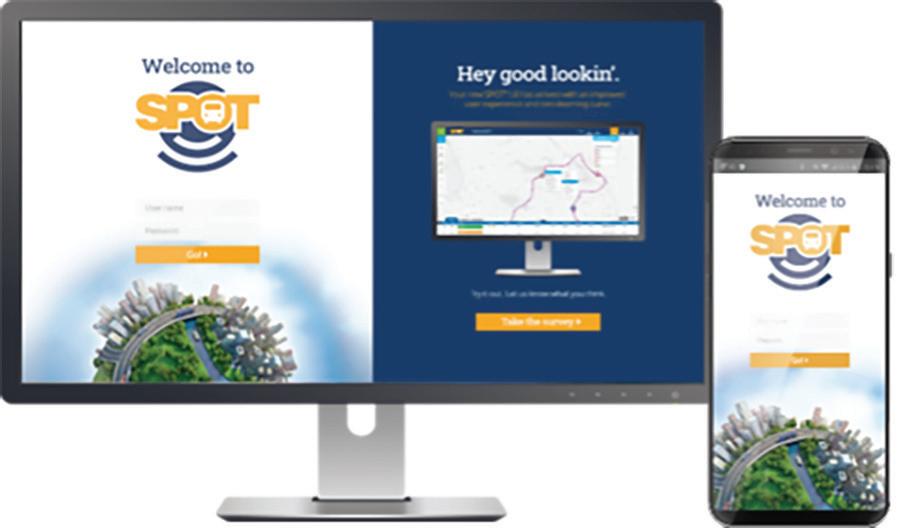

WavWriter, a full control suite offered by Penta Corporation, allows for the creation, distribution and control of audio-visual messaging and associated system equipment to deliver live, ad hoc, pre-recorded, automated and text-to-speech audio and visual messages to any station or zone. With transit-focused intuitive map-based user interface, WavWriter can be used with transit systems like public address systems, visual messaging systems and realtime passenger information systems. WavWriter is also designed for automated delivery of messaging such as arrival, departure, customer service and emergency messages through its various available interfaces.
PENTA CORPORATION
www.penta-corp.com
